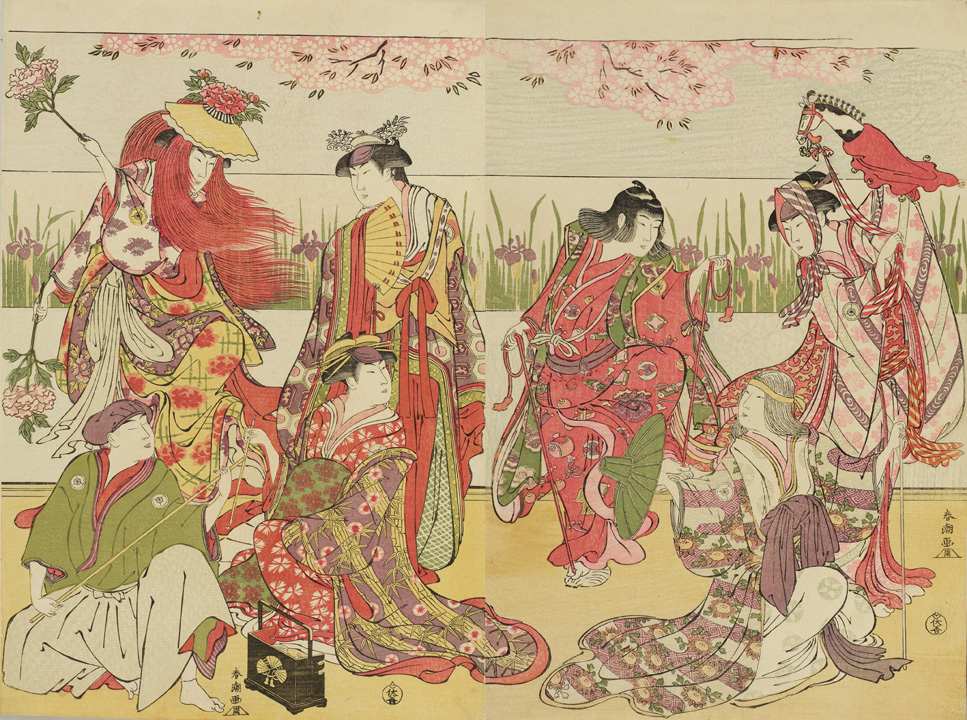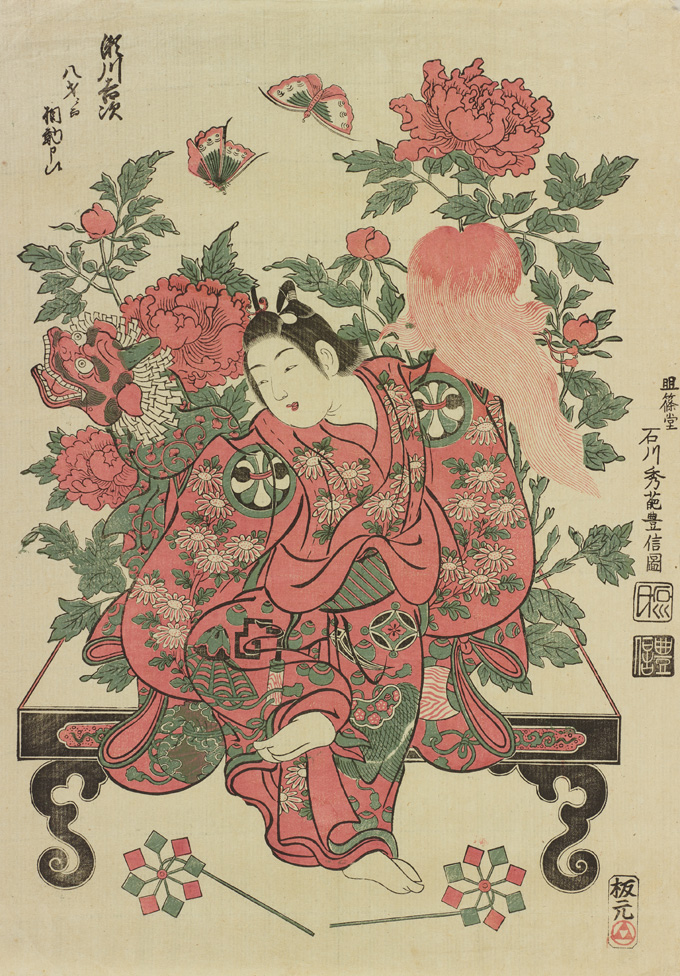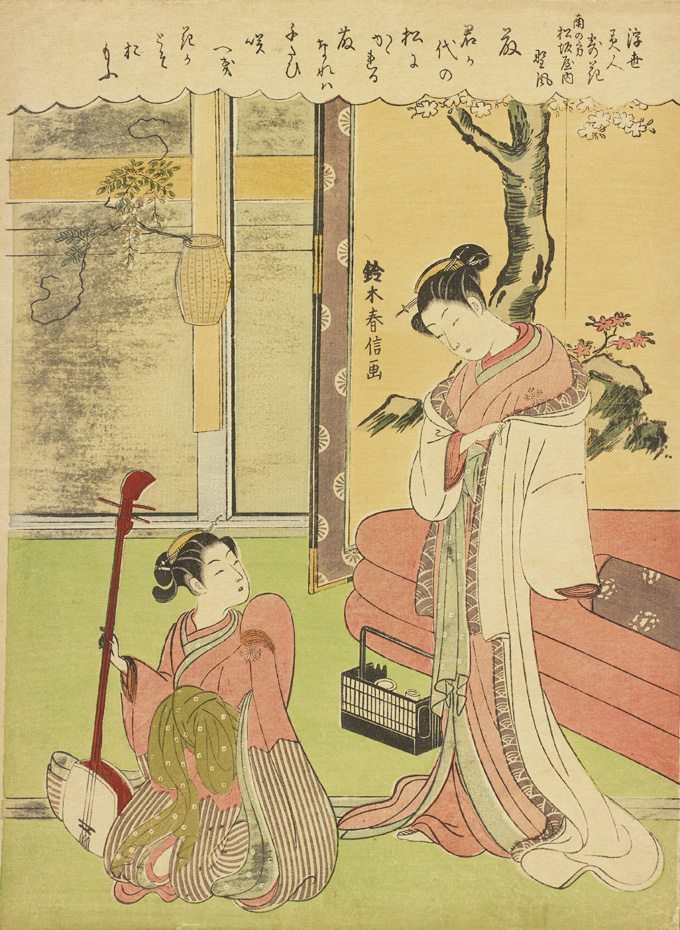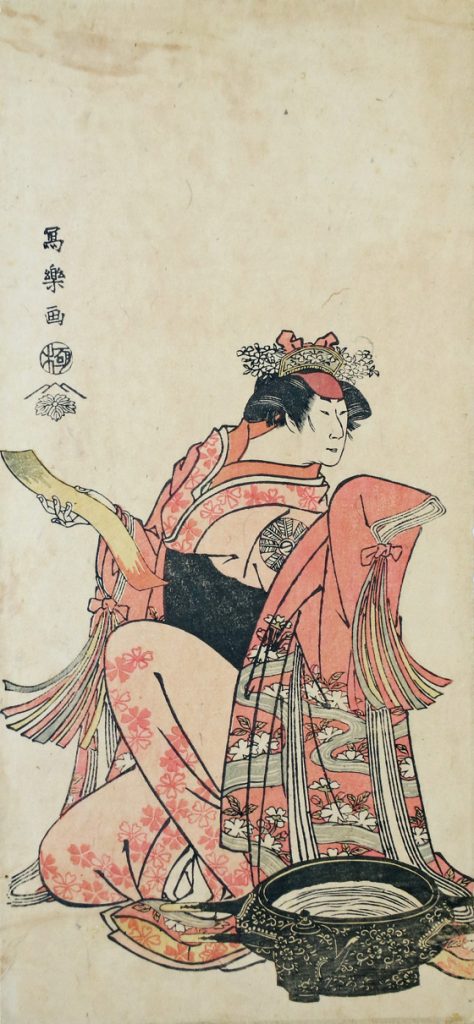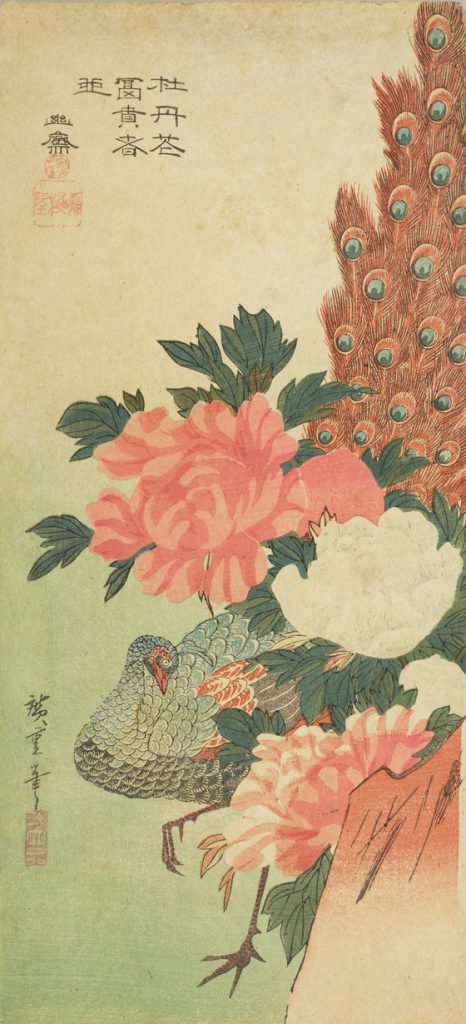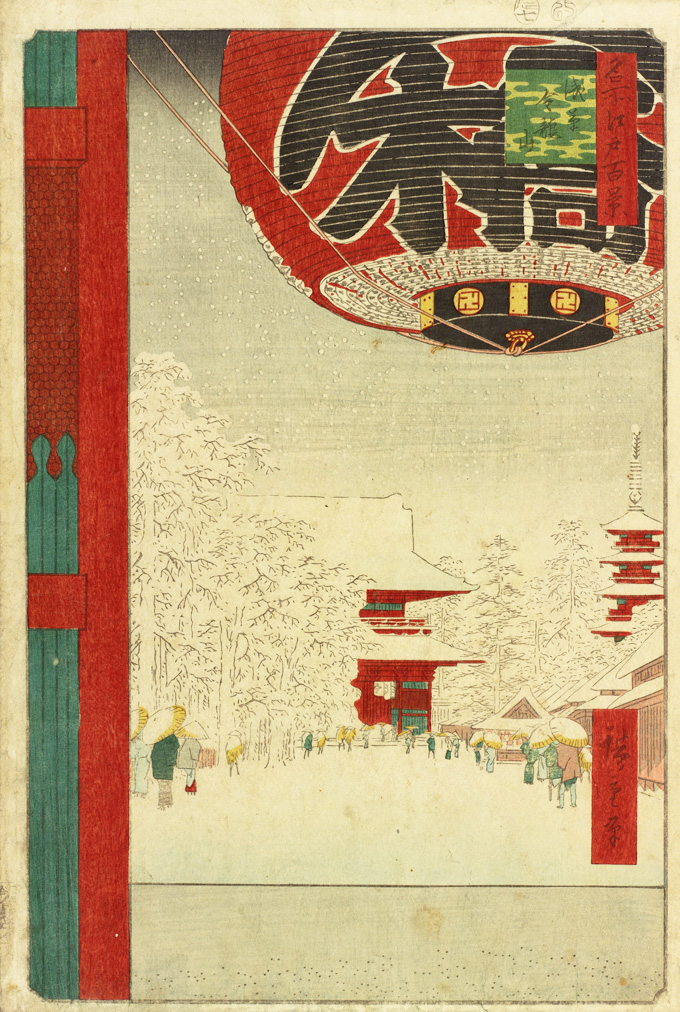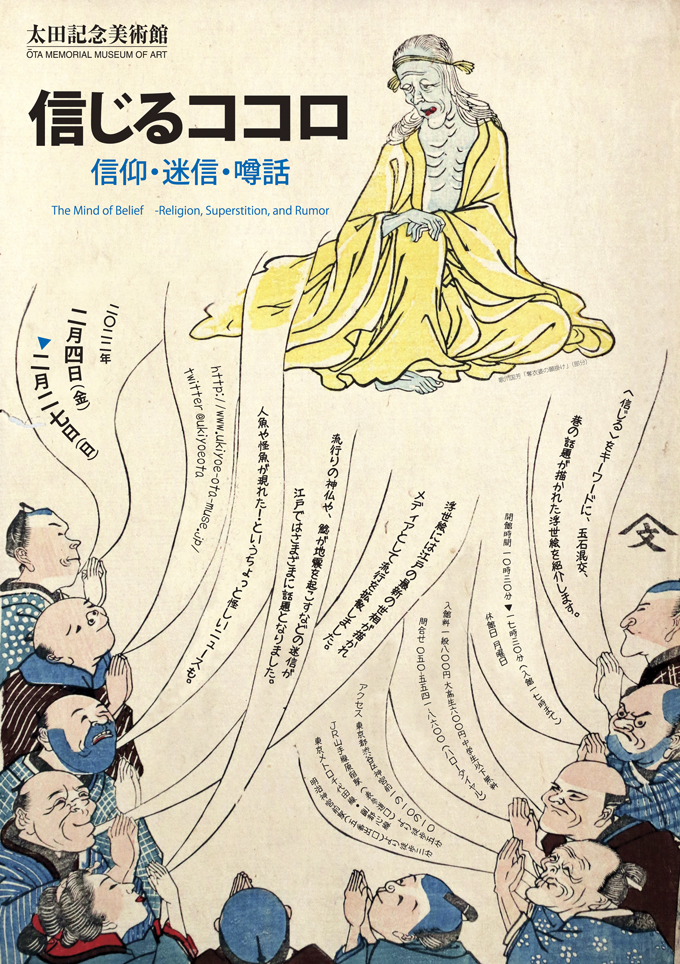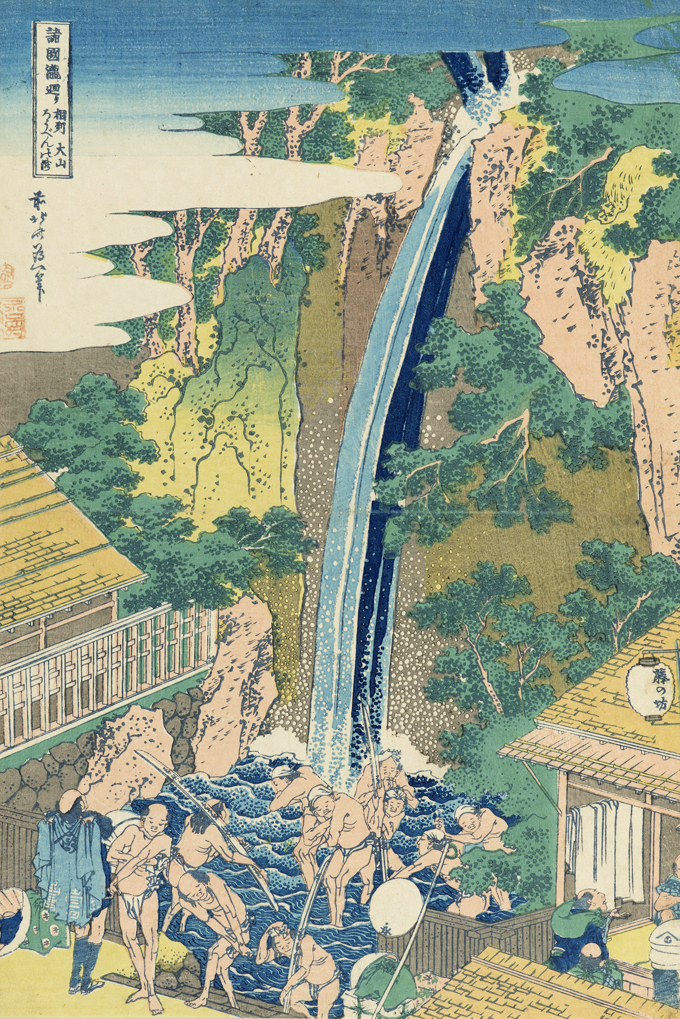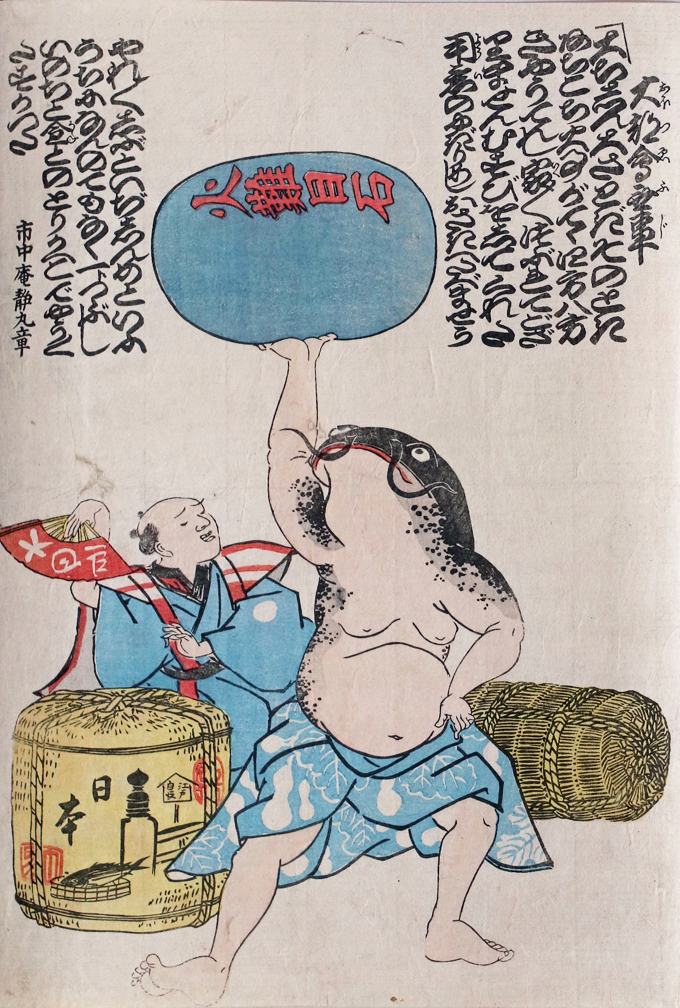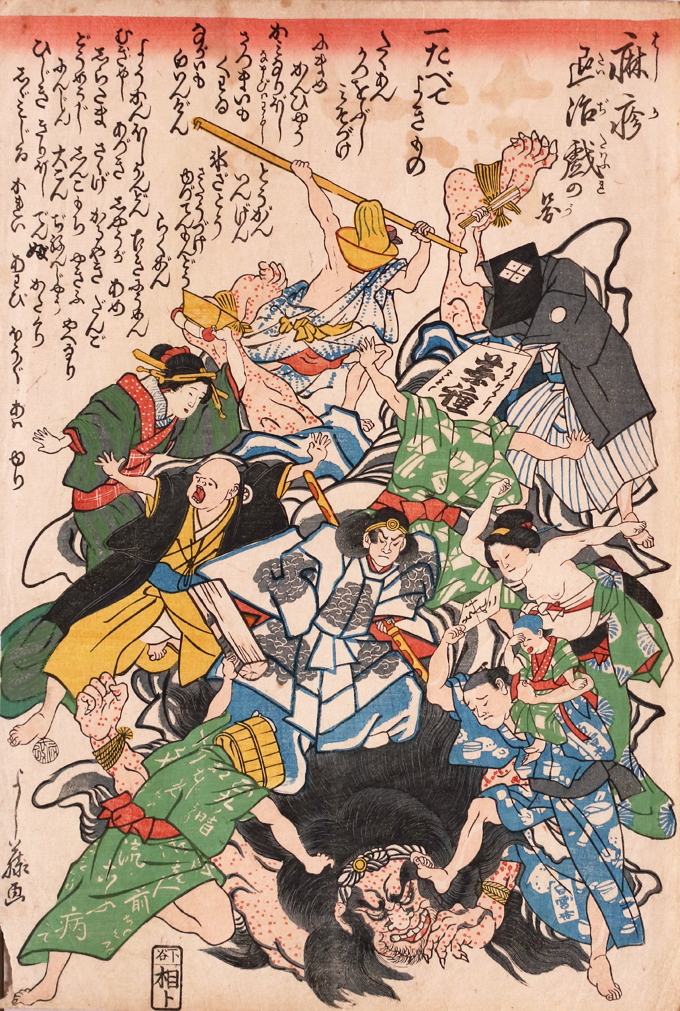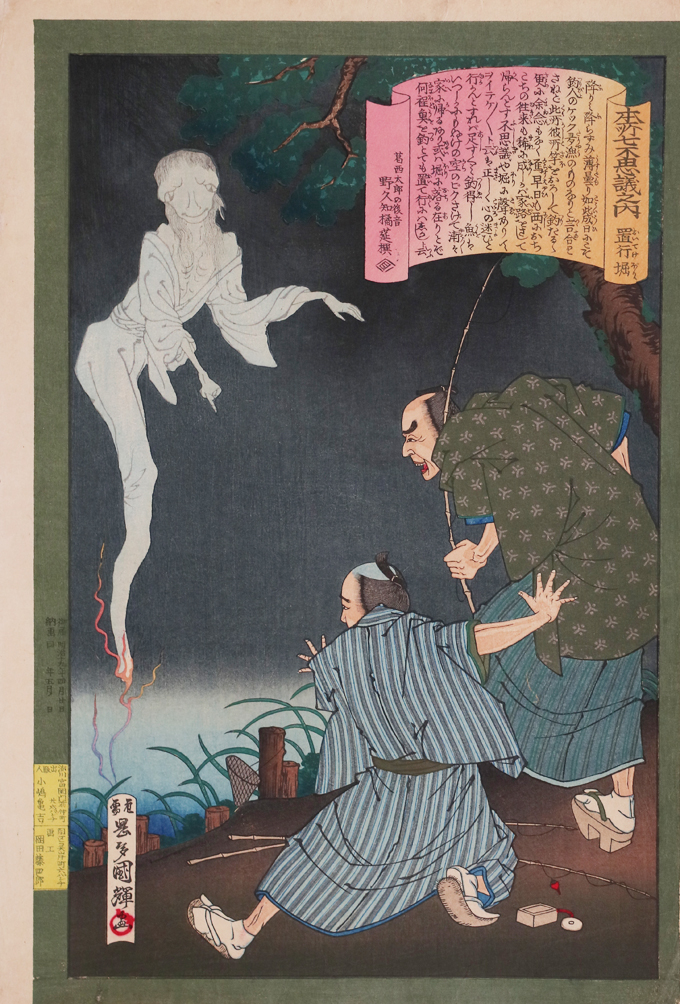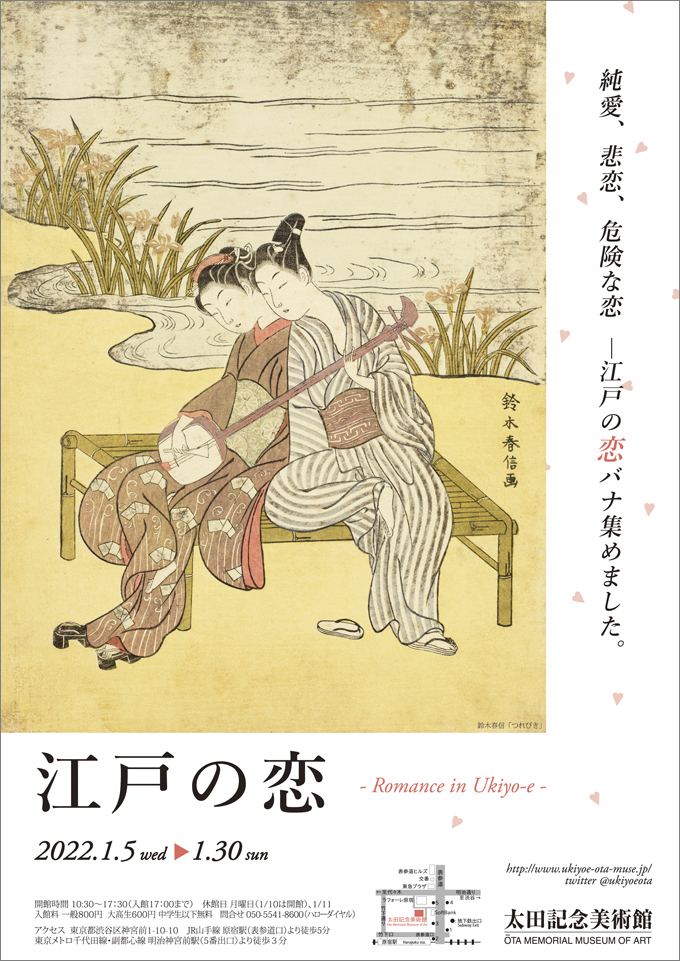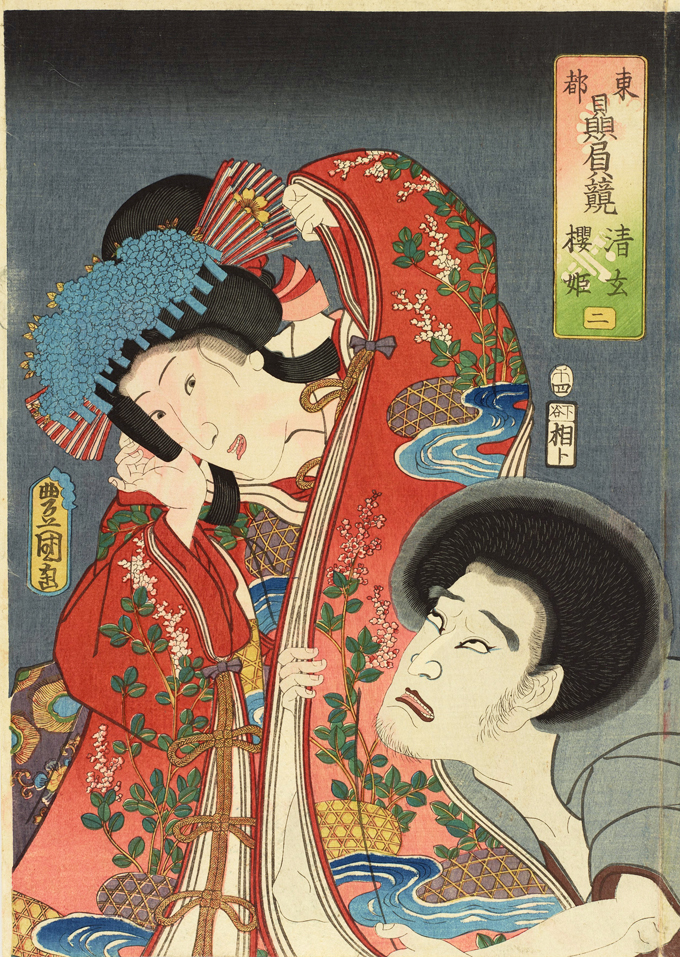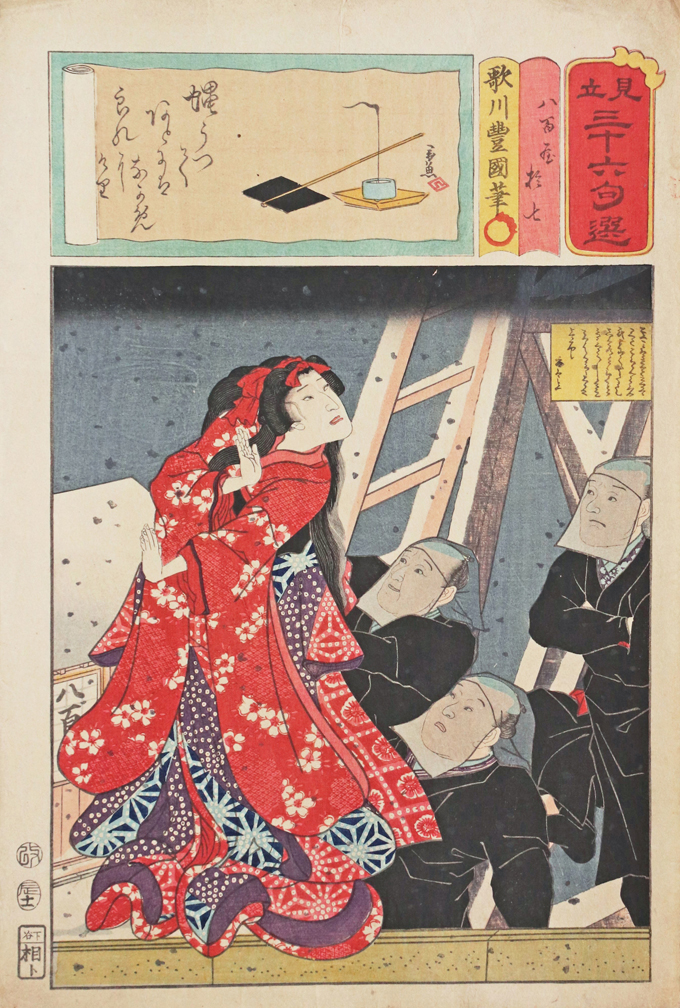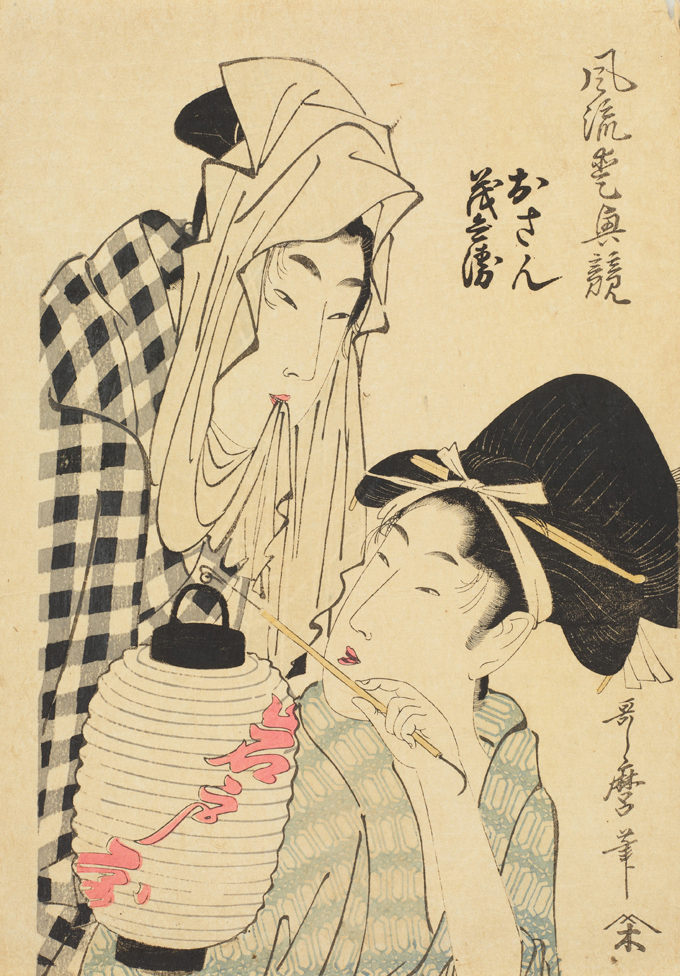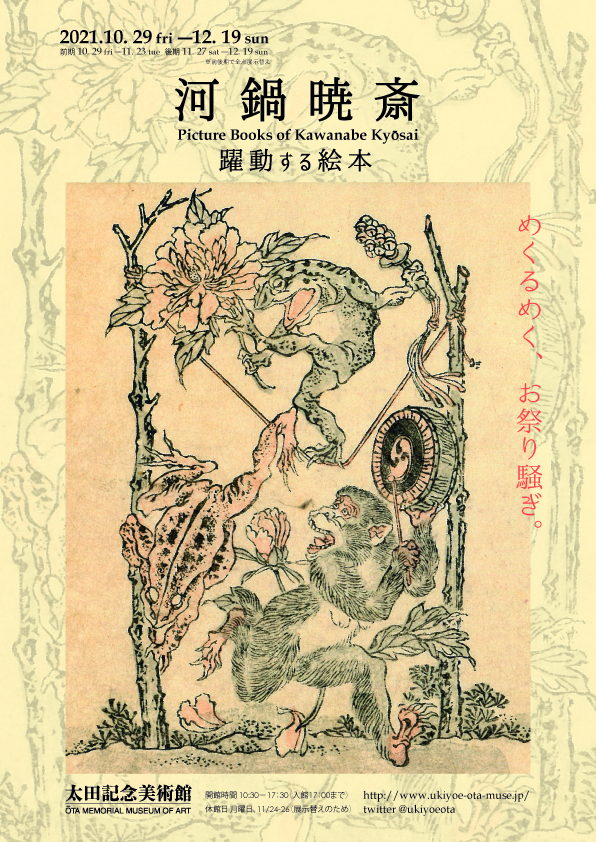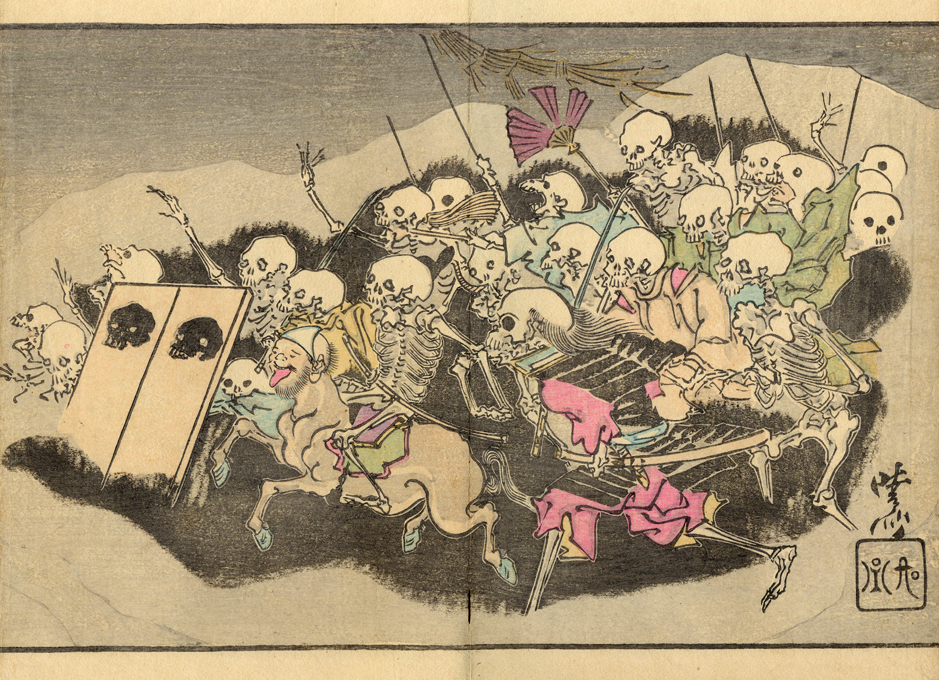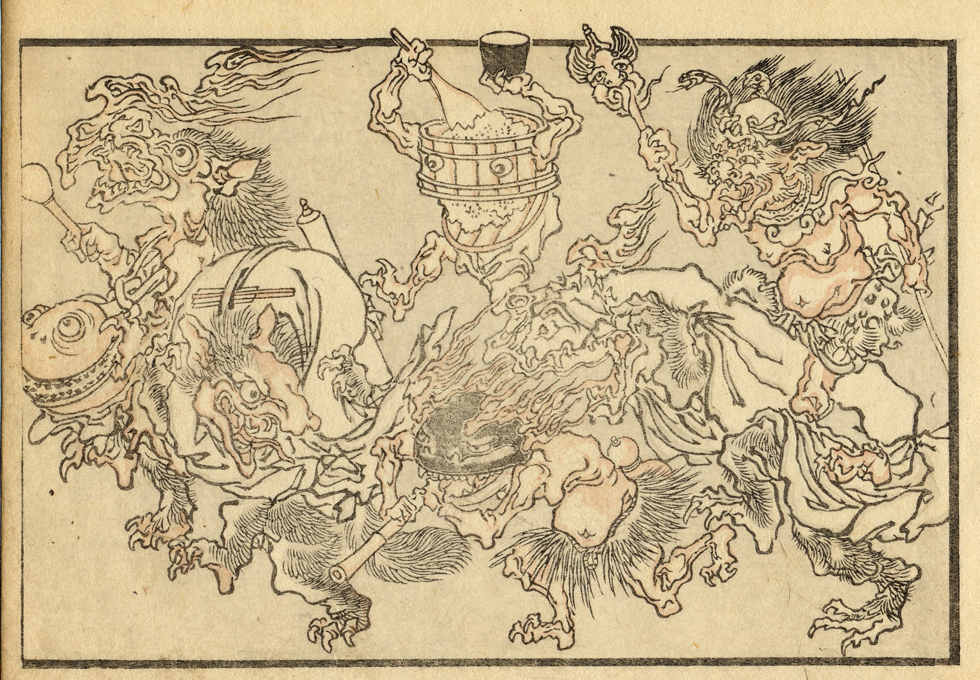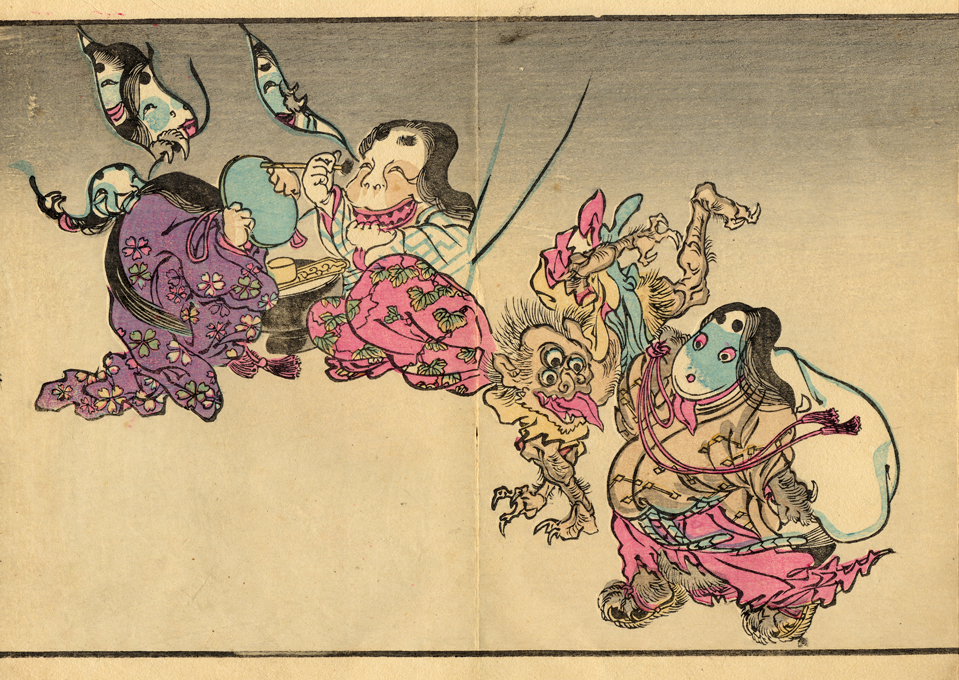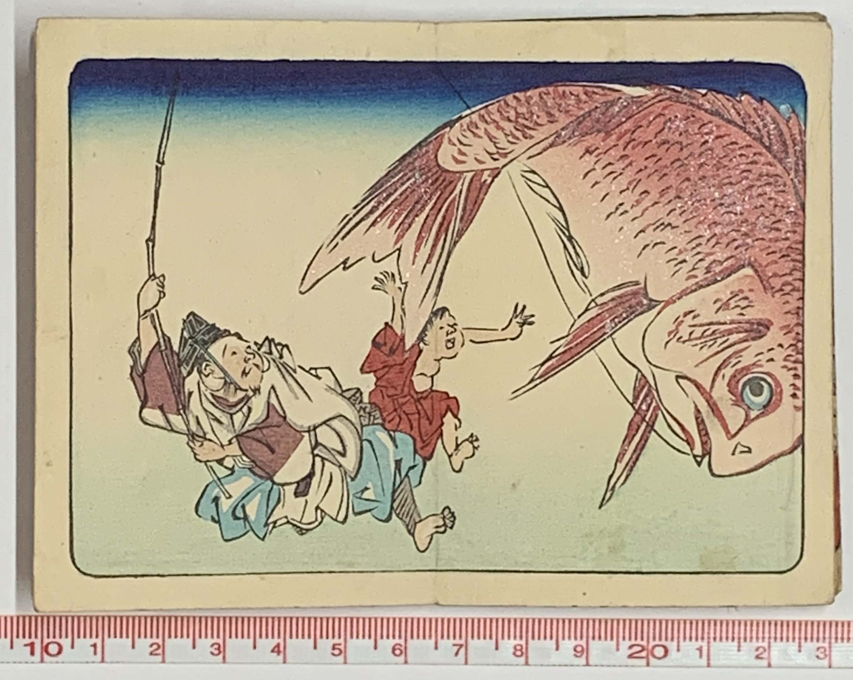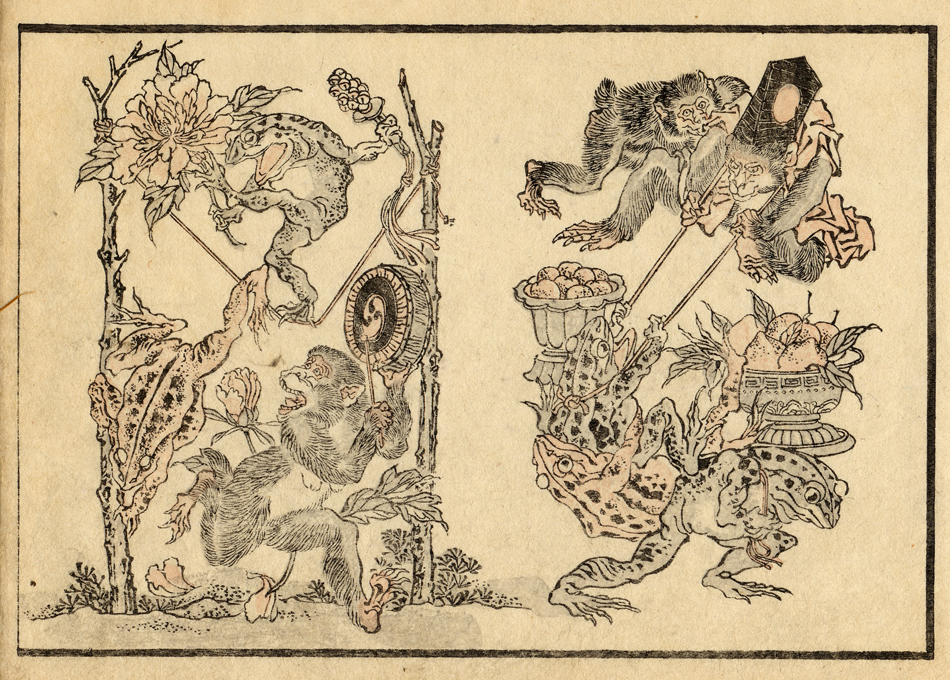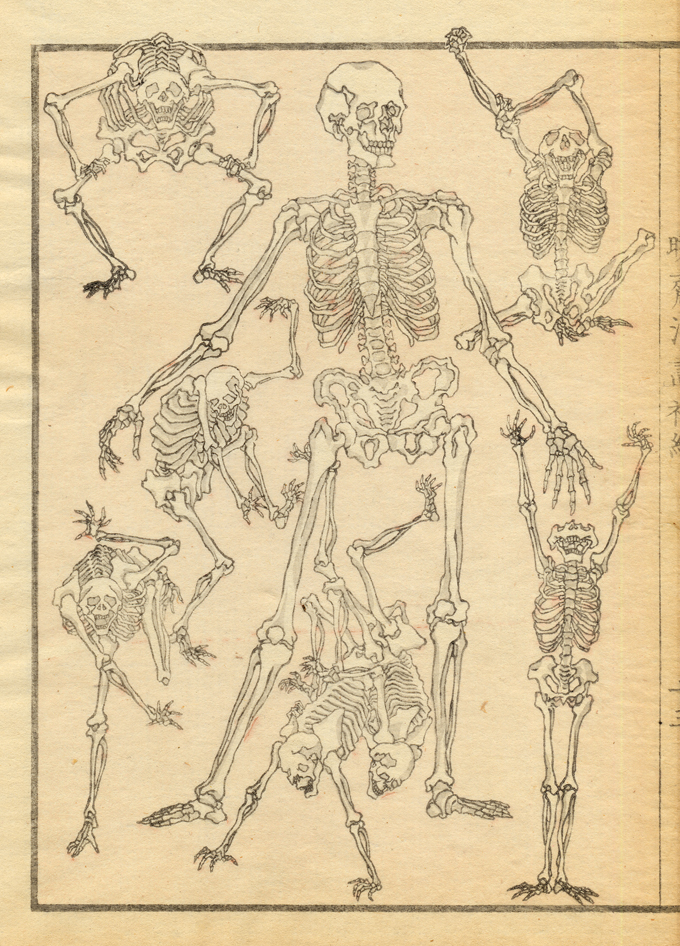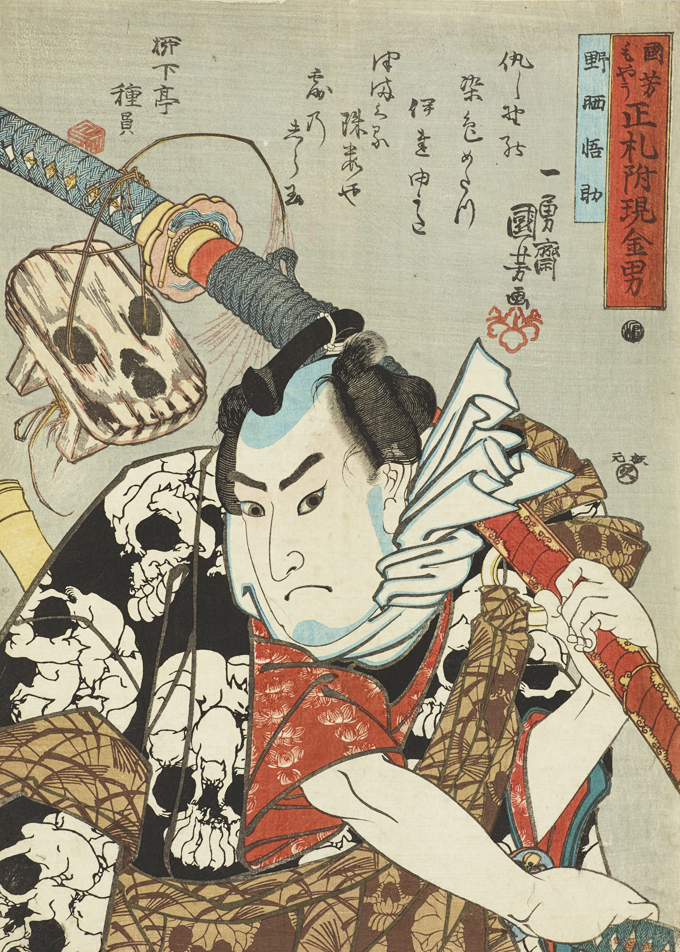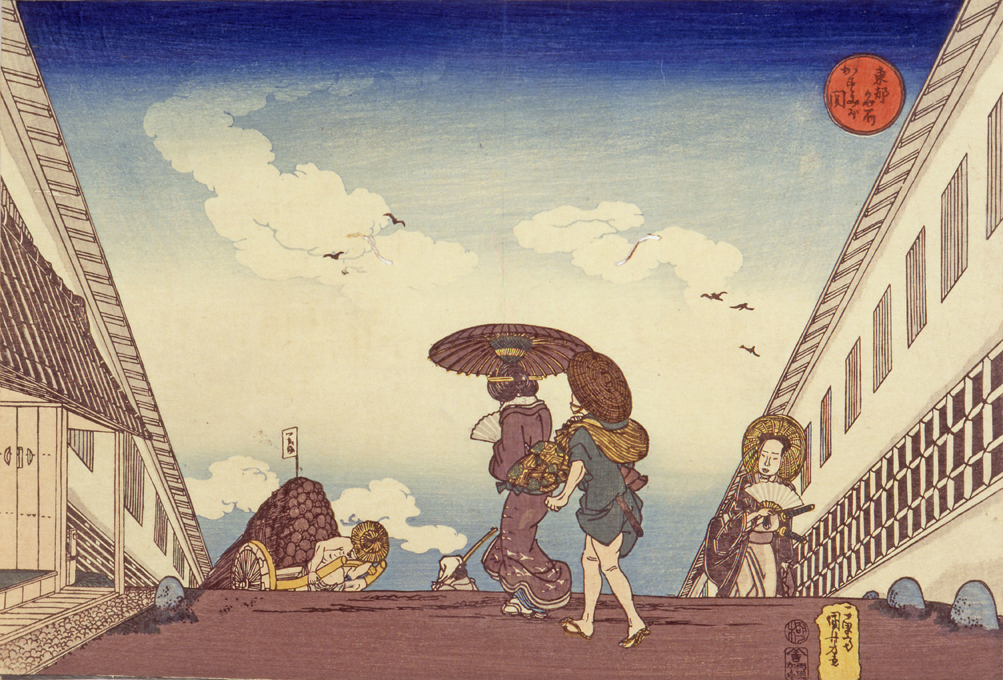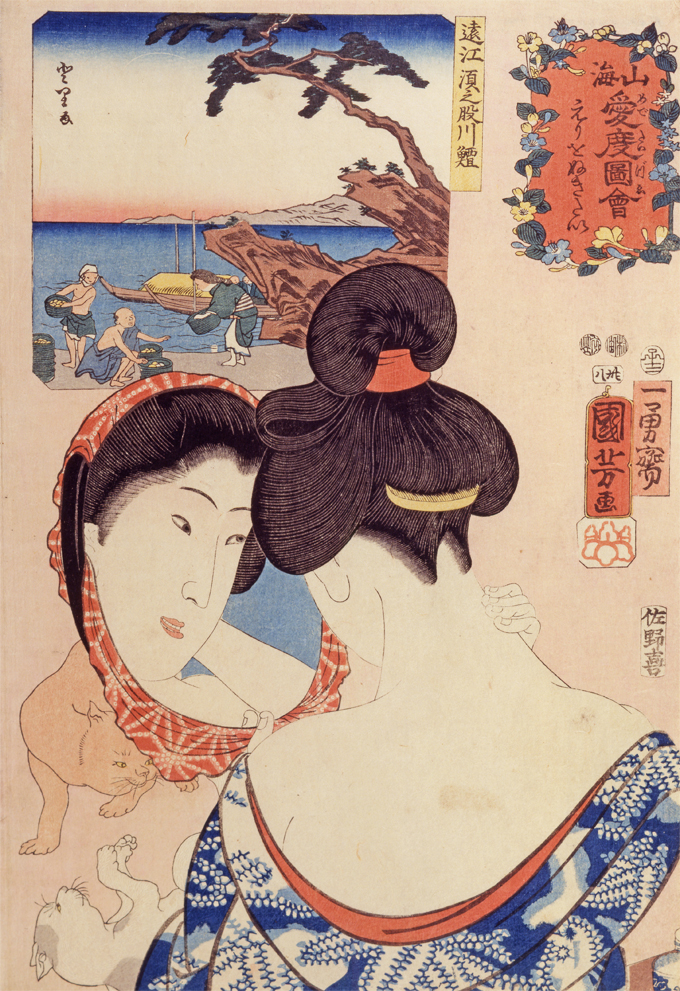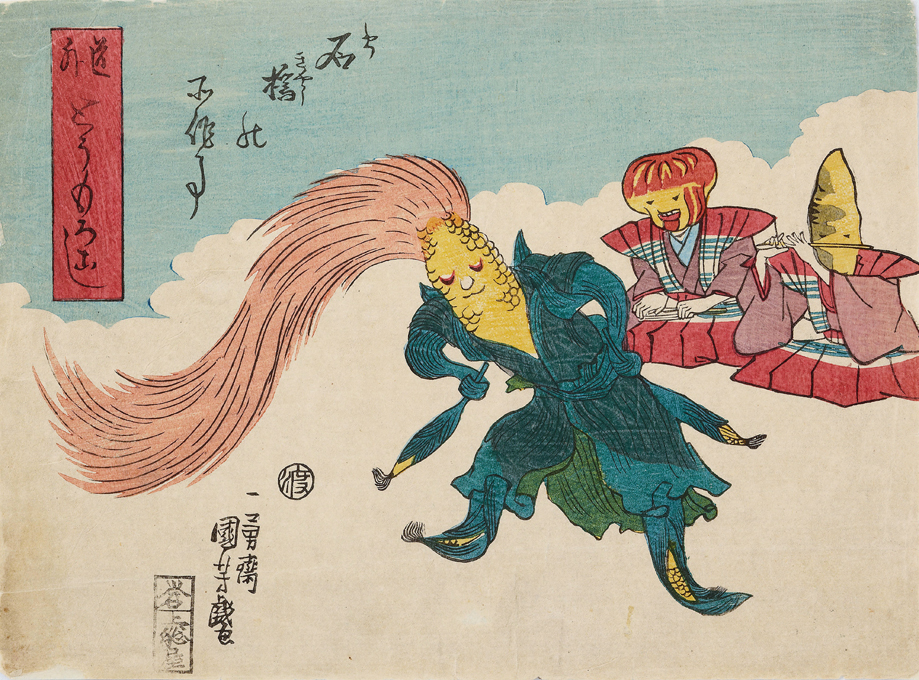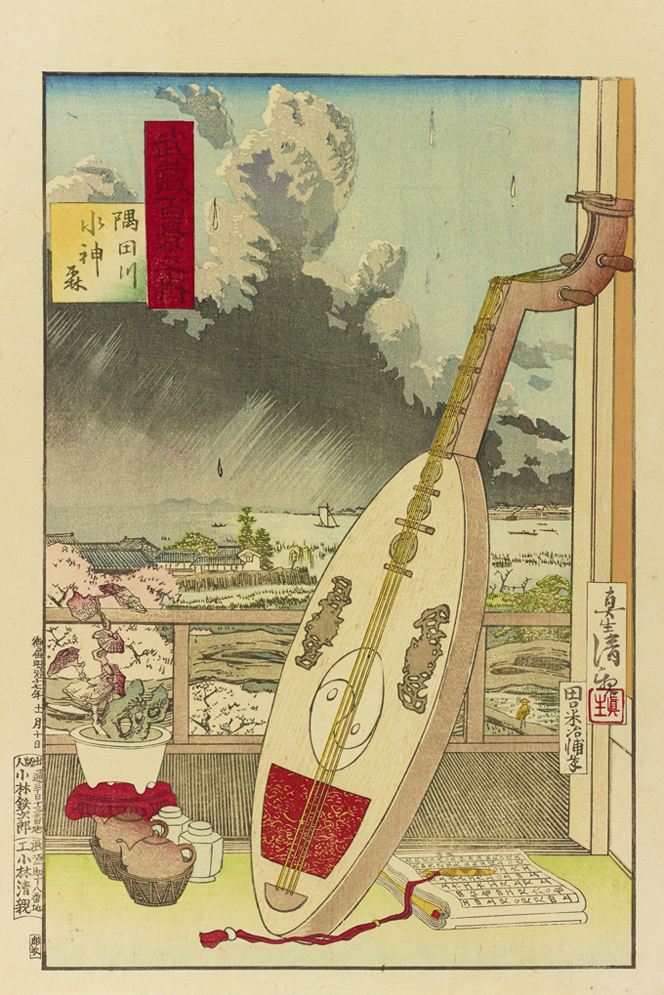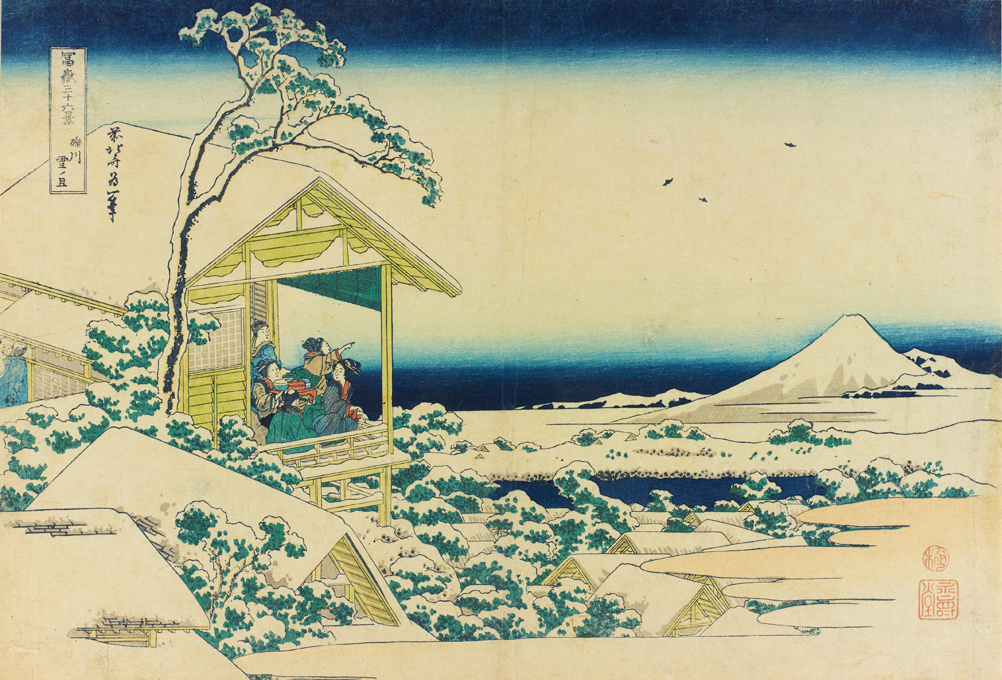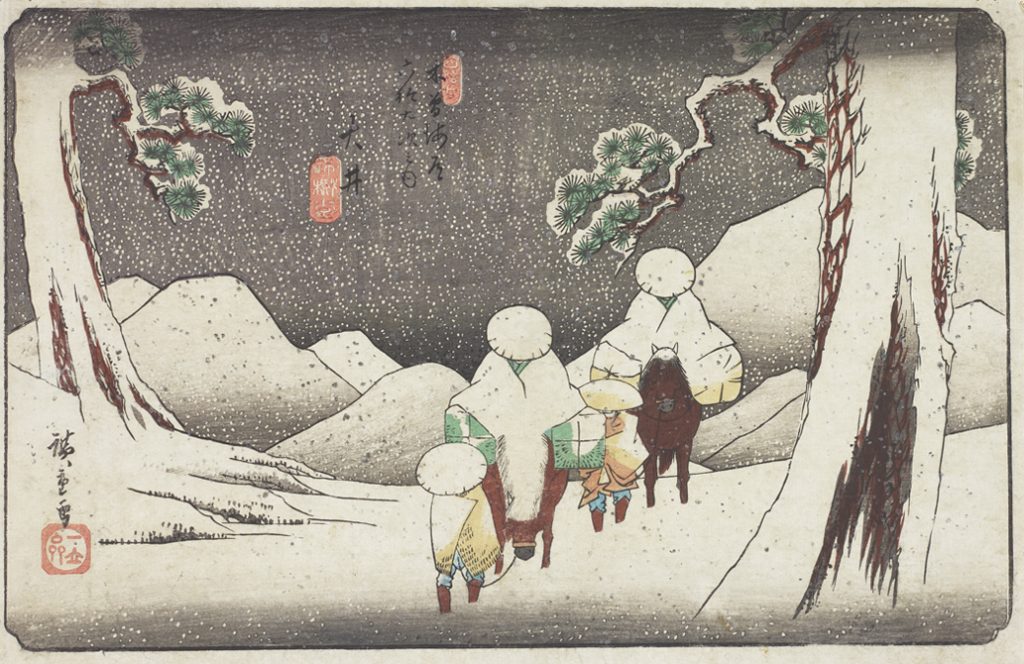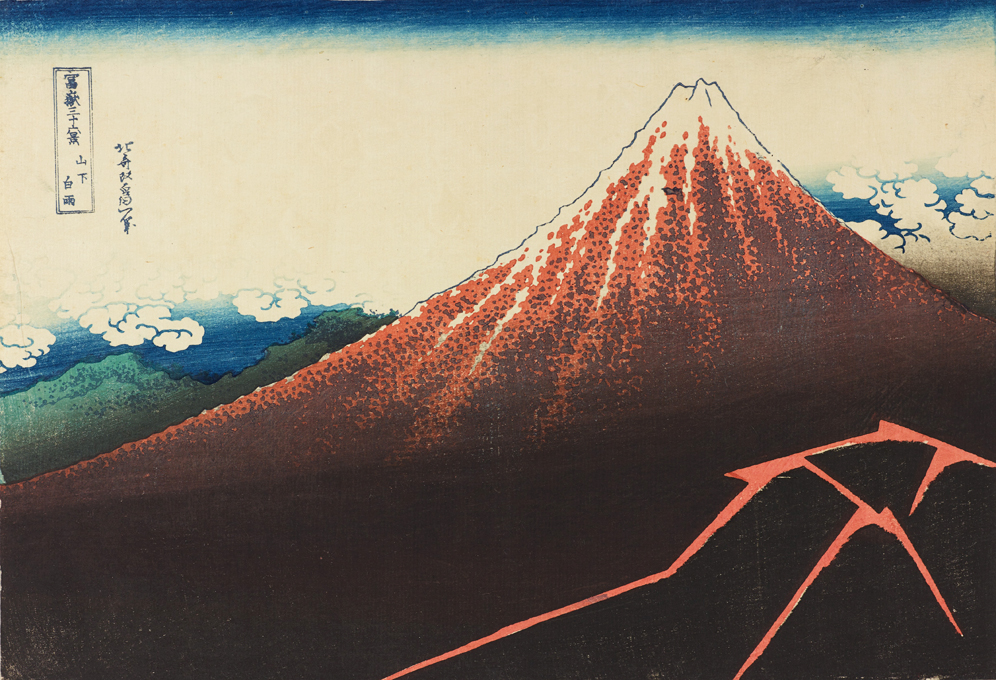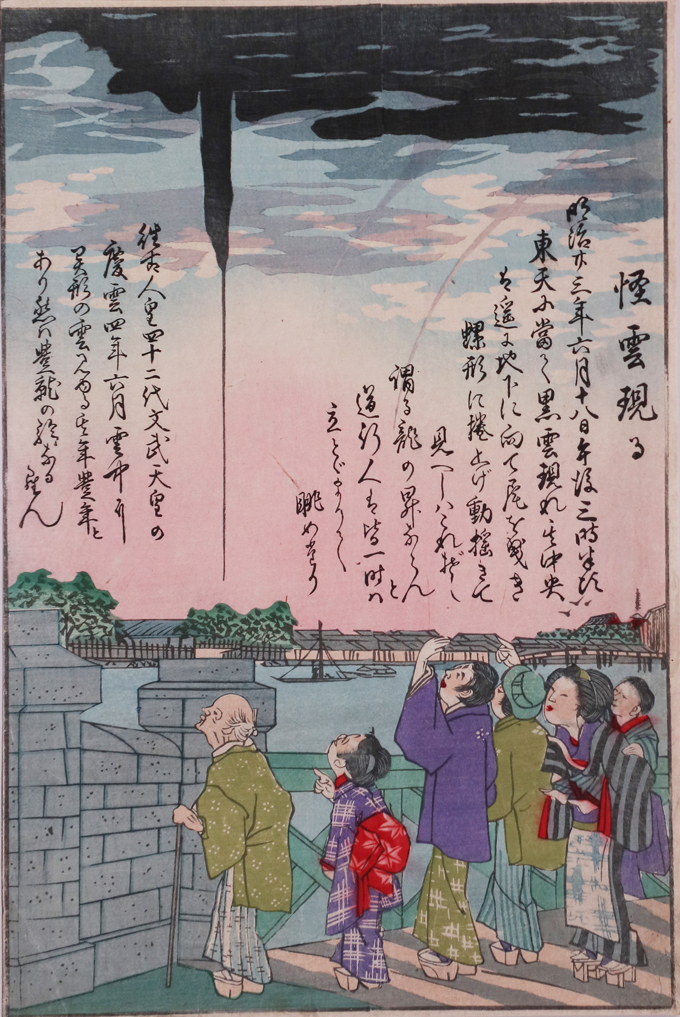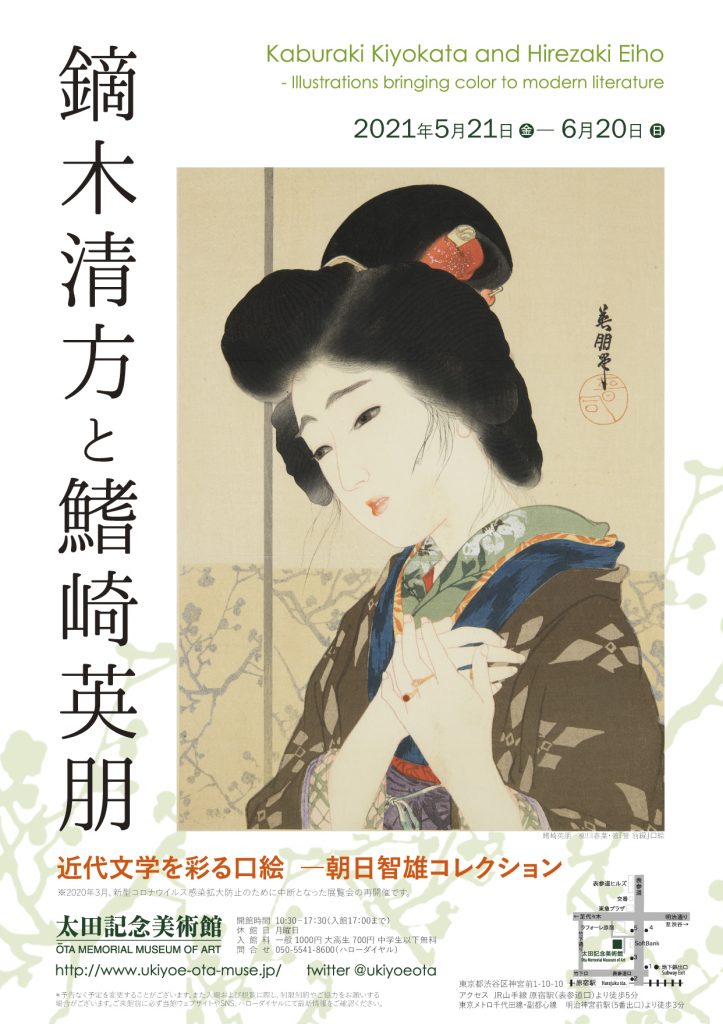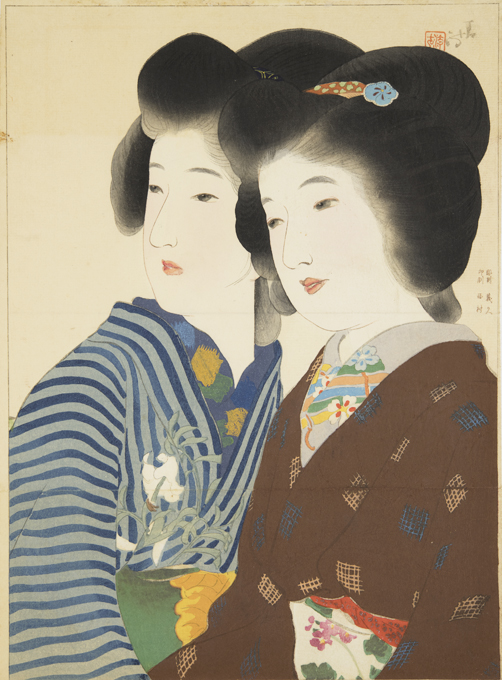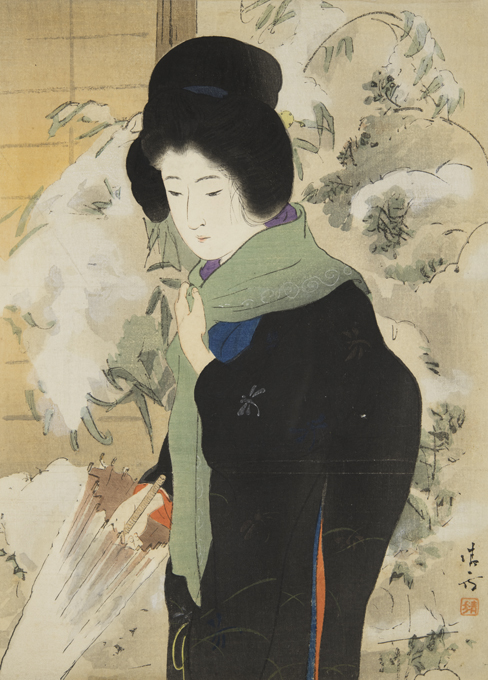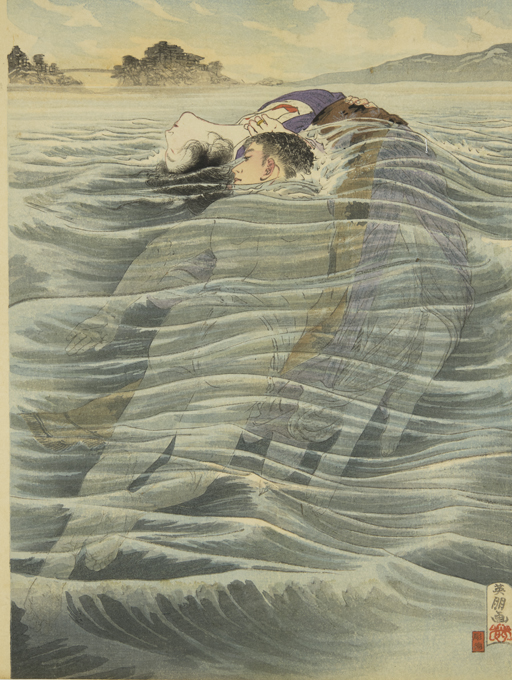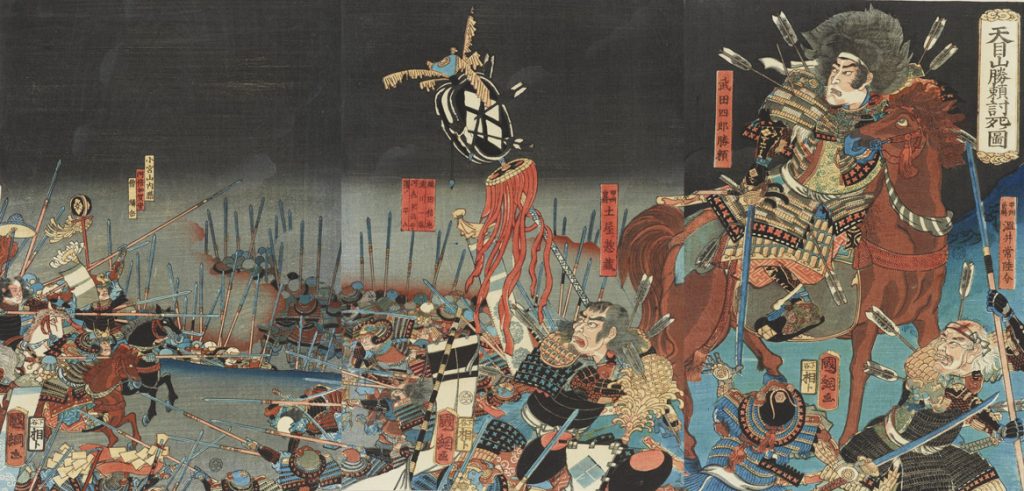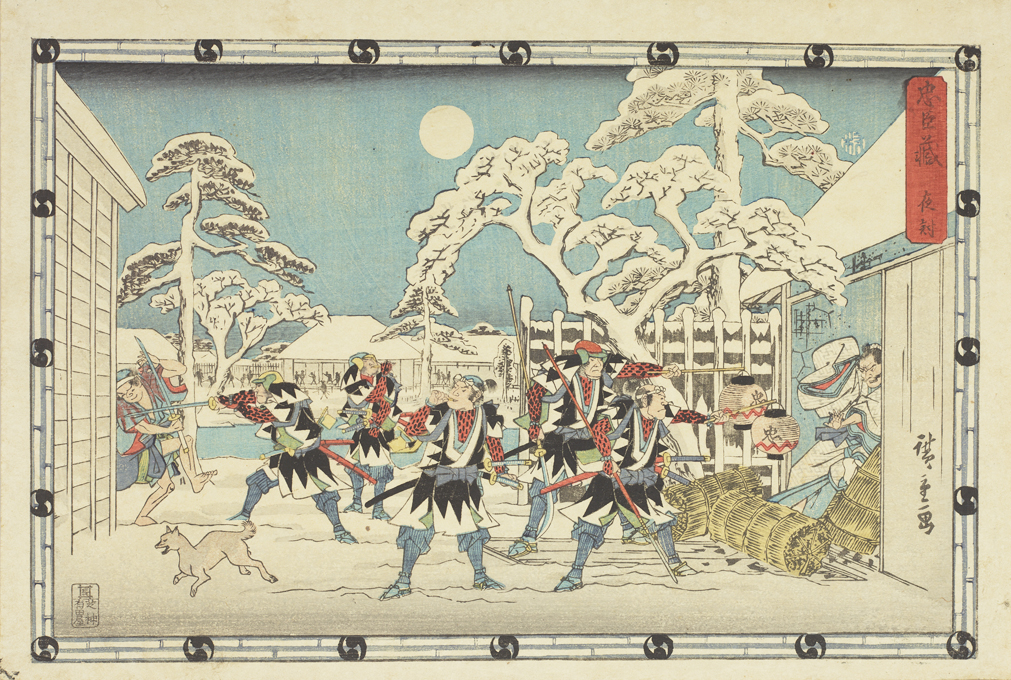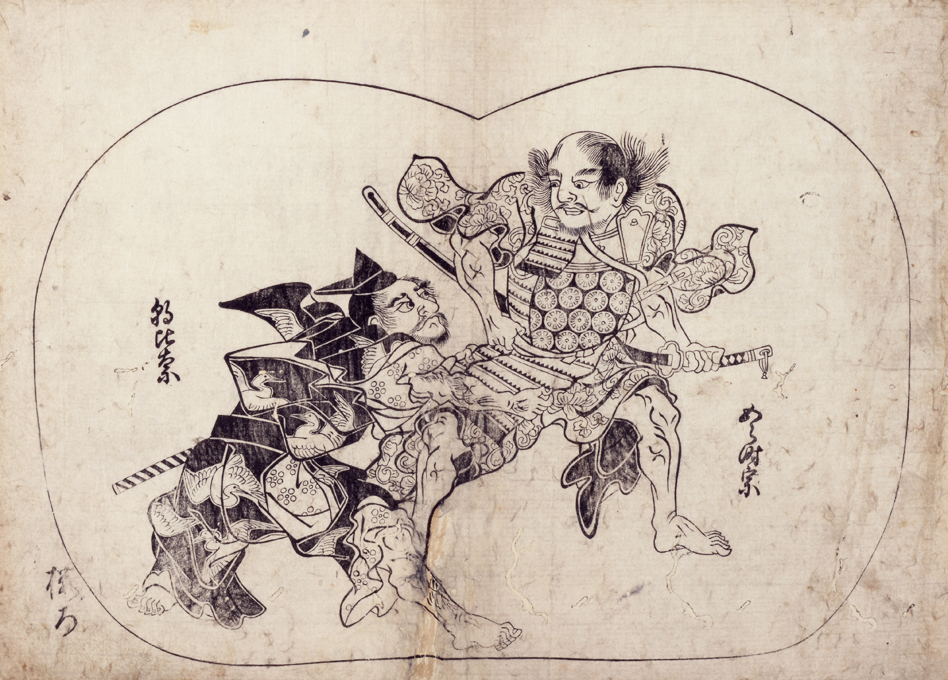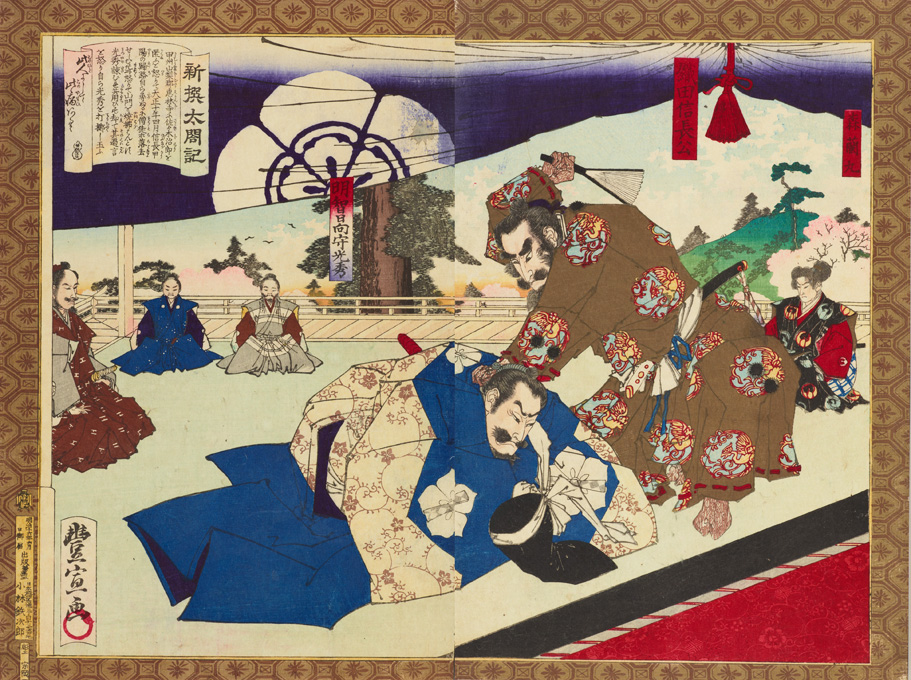Red -The History of Ukiyo-e from the Perspective of Color
Gorgeous Red Color in the Spotlight
Although ukiyo-e works are full of rich colors, red is the most important paint to make the whole work gorgeous and add tension to the piece. The exhibition will explore the beauty of red that fascinated people in the Edo and Meiji Era, by carefully selecting about 60 ukiyo-e paintings with impressive vivid red.
History of Ukiyo-e Made by Red
Red is the most common color used in terms for ukiyo-e production, such as “Beni-e” (hand-painted red pictures), “Benizuri-e” (prints with red and a few other colors), “Aka-e” (red pictures), and “Benigirai” (red-avoiding pictures). The changes in the use of red paints show the development of ukiyo-e techniques. We will introduce a new way of looking at ukiyo-e that you can enjoy by paying attention to red.

Sharaku, Hiroshige and Yoshitoshi – Their Techniques of Using “Red”
Shades of red have varied over 200 years of ukiyo-e history. Although it was a pale color during Harunobu and Sharaku’s time, it became darker in Hiroshige and Kunisada’s time, and it became vivid and loud in the Meiji period when Yoshitoshi was active. We will introduce how red was used by popular ukiyo-e artists.
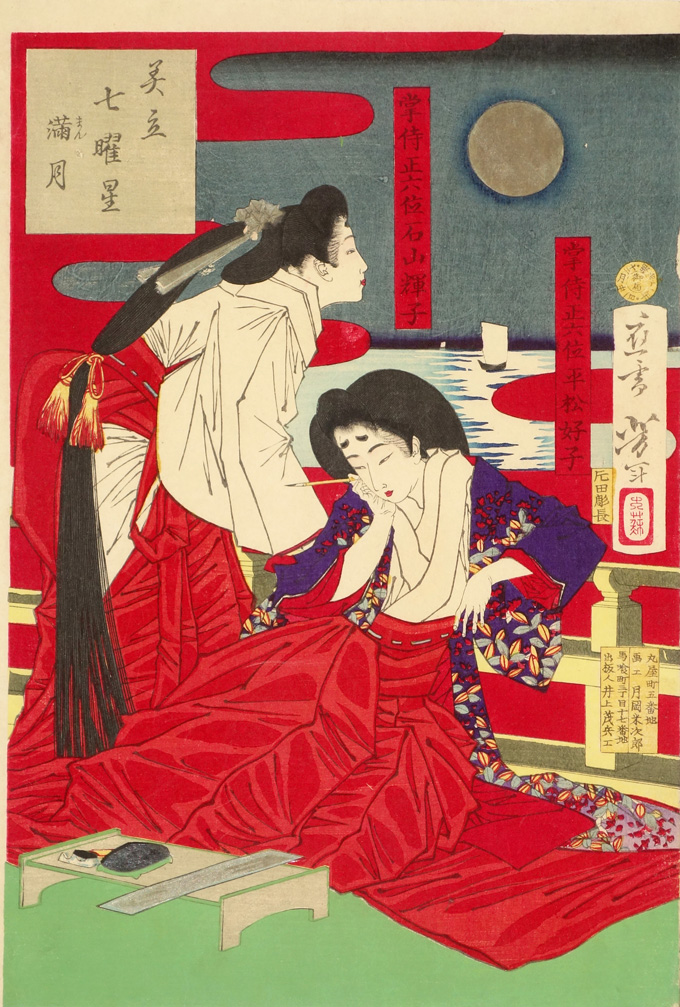
Highlight of the Exhibition
Utagawa Hiroshige “One Hundred Famous Views of Edo: Kinryūzan Temple at Asakusa”
Here is a snow scene of Sensōji Temple. It emphasizes the whiteness of snow by drawing the large lantern of the Kaminarimon gate in front, and even more so by placing vivid red in various places. Safflower, one of the pigments used to make red paint, was valuable, and was not often used to print large areas in vivid red. However, it seems that the supply and quality of red paint had improved by the end of the Edo period, and Hiroshige began to use a large amount of vivid red in his works. Changes in paints have had a great influence on the appeal of ukiyo-e.
Admission
| Adult | 800 yen |
| University and High school students | 600 yen |
| Junior High School Students and below | Free |
Calendar
■休館日
休館日
1-3, 7,14,22,28-31
2022 / 3
1-3, 7,14,22,28-31
| SUN | MON | TUE | WED | THU | FRI | SAT |
|---|
The Mind of Belief -Religion, Superstition, and Rumor
A Variety of Ukiyo-e Works with the Keyword “Believe”
During the Edo period (1603-1868), a variety of folk beliefs were popular among the common people. From large temples such as Senso-ji to Inari shrines in the town, many temples and shrines often held fairs and events, which attracted a large number of people. The interest of the common people was not limited to the city of Edo, but also extended to the suburbs, such as Benzaiten in Enoshima and Ōyama-sekison Shrine in the vicinity, and Mt. Fuji and the Ise Shrine in the distance. People went out of Edo not only for worshipping, but also to have fun.
One of the characteristics of the folk beliefs of Edo is that their trends changed rapidly. For example, in 1849, three folk beliefs became a big boom but were fleeting. Ukiyo-e, which depicted the latest world affairs of the time, played the role of spreading these trends to people like SNS today. We will introduce a variety of ukiyo-e works with the keyword “believe”, including “namazu-e (catfish pictures)” which are based on the superstition that catfish cause earthquakes, and works depicting the rather suspicious news of mermaids.

Making a Buzz with Ukiyo-e! Fashionable Deities
One example that symbolizes the changeable beliefs of the people of Edo is the phenomenon of faddish deities. In particular, Otake-nyorai, which was unveiled at Ekō-in Temple in 1849, became very popular. At the same time, other two deities were also popular in Edo, and attracted many pilgrims. At the time, many ukiyo-e artists such as Utagawa Kuniyoshi drew these popular gods in ukiyo-e, and played a role in spreading this trend
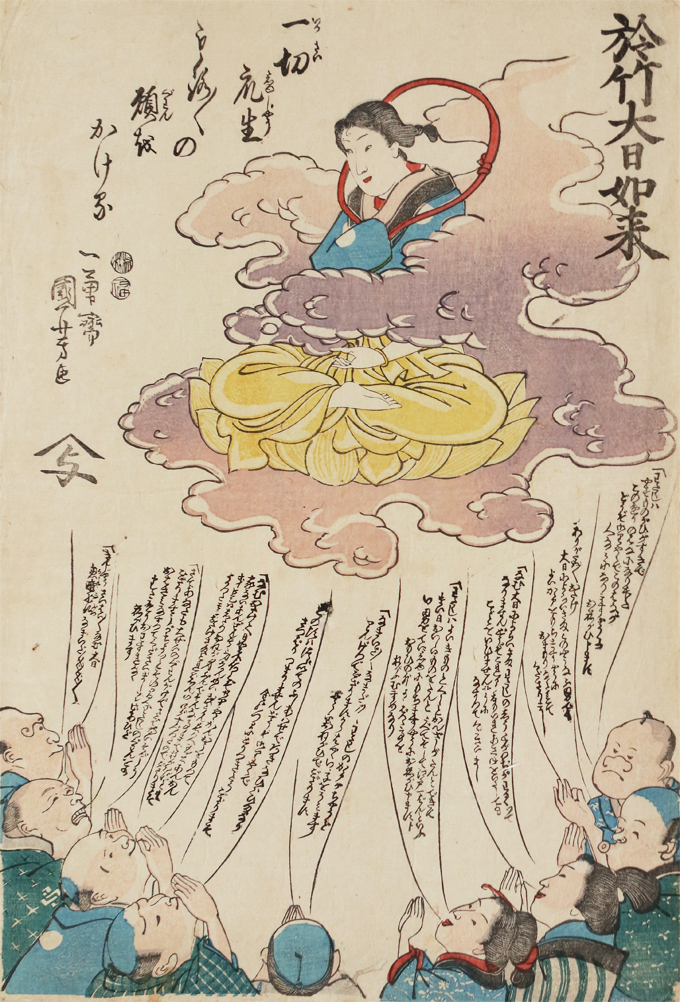
Big Earthquakes, Epidemics and Superstitions –Change Them into Laughter
People in Edo believed in various superstitions in their daily lives, and these superstitions had a close relationship with ukiyo-e. For example, after the Great Ansei Earthquake in 1855, many humorous paintings of catfish, based on the superstition that catfish were the cause of earthquakes, were drawn and became very popular. Not only disasters, but superstitions related to epidemics also became a subject of ukiyo-e. When epidemics such as pox, measles, and cholera broke out, many caricature-style works were published, depicting superstitions related to diseases in a funny style.
A Mermaid Appeared! Doubtful Topics Depicted in Ukiyo-e
In Edo, news that was a little suspicious and doubtful rumors became hot topics, and were often the subjects of ukiyo-e. For example, there is a picture depicting a mysterious mermaid-like woman who appeared out of the sea in Echigo Province. The woman prophesied, “There will be an epidemic in the future, but if you draw a picture of me and put it in your house, you will be safe,” and disappeared. Moreover, we will introduce a series of works depicting the seven famous wonders of Honjo in Edo.
Highlight
Utagawa Kuniyoshi “Making Wishes to Datsueba”
Many people are worshipping an old woman with a slightly troubled look. This old woman was actually a figure of Datsueba, enshrined at Shōjyuin Temple in Naito Shinjuku, which became a popular deity in 1859 along with Otake Nyorai (No.4). Datsueba is a demoness who strips off the clothes of the deceased on the banks of the Sanzu River, which divides this world and the world after death. By the end of the Edo period, she had become a popular object of folk belief. In this picture, many people are making wishes of their own, such as “I want to be taller,” “I want to be stronger,” “I want to marry a nice person,” etc., in order to benefit from the power of the demoness, and she seems to be fed up. The design filled with people’s dialogues is also impressive here.
Admission
| Adult | 800 yen |
| University and High school students | 600 yen |
| Junior High School Students and below | Free |
開館日カレンダー
■closed
休館日
1-3, 7,14,22,28-31
2022 / 3
1-3, 7,14,22,28-31
| SUN | MON | TUE | WED | THU | FRI | SAT |
|---|
Romance in Ukiyo-e
From Pure Love, Tragic Love to Adultery -A Collection of Love Stories from Edo
In ukiyo-e, we can see all forms of love. Celebrated artists such as Suzuki Harunobu and Kitagawa Utamaro depicted ideal love between beautiful men and women that fascinated viewers. On the other hand, the love-hate dramas of Kabuki and Joruri plays, based on shocking real-life incidents such as suicide, adultery, and murder following romance, were also good subjects for ukiyo-e. As well as beautiful romance, ugly relationships between men and women, just like in modern day dramas, also attracted people in Edo. This exhibition focuses on love depicted in ukiyo-e. Not only can you enjoy romantic pictures, but you can discover the real lives of Edo people, who had various emotions, such as earnestness and jealousy, just like us.
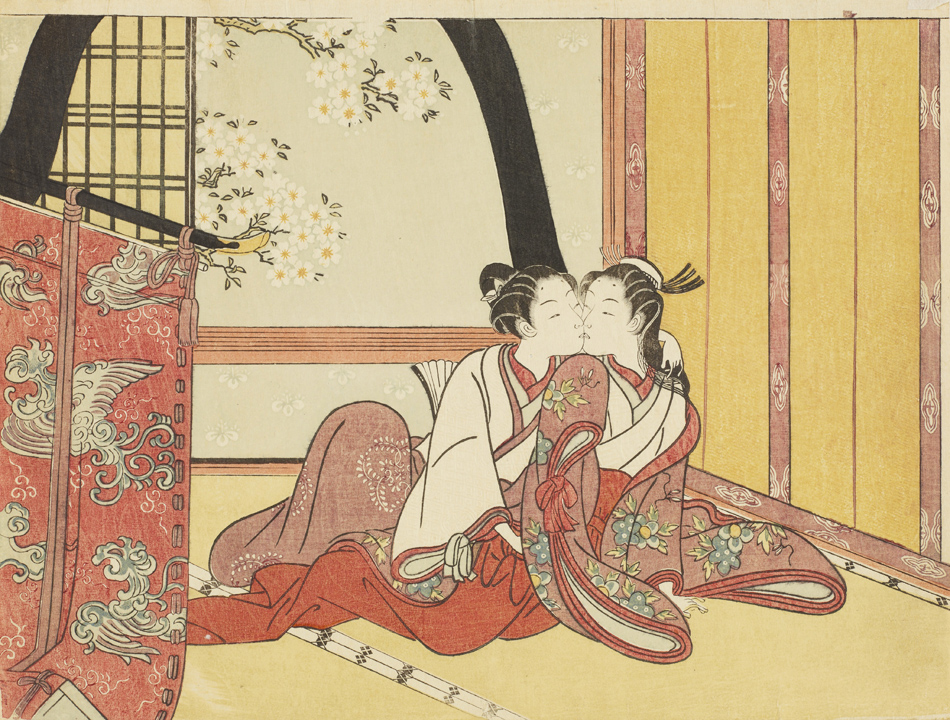

A Dangerous Love and Its Consequences
Portraits of men and women who seem happy are often depicted in ukiyo-e. However, let’s read into their background. A town girl, Omiwa, was troubled by a love triangle and lost her life because of jealousy, Yaoya-Oshichi, who committed arson to see her lover one more time, was given the death penalty, and a courtesan Urazato and her lover Tokijirō thought of double suicide since they were unable to be together. We will trace those sensational loves through ukiyo-e.
Handsome Men, Bad Men, and Stalkers – Men in Love
Sukeroku, a popular kabuki character, who bonded strongly with a courtesan named Agemaki, was a beautiful man and an ideal person as a lover. However, ukiyo-e depicts not only such perfect men, but also a large number of good-for-nothing men who could hardly be called heroes. Fujiya Izaemon fell into debt and had a quarrel with his lover, a courtesan named Yugiri; a monk named Seigen, who can be considered to be the first stalker, stalked Princess Sakura even after his death, and Sano Jirozaemon killed a courtesan who rejected him. It is clear that people were also attracted to miserable men who were tossed about by love.

Highlight
Suzuki Harunobu “Young Lovers Playing a Single Shamisen”
A young man and woman sit together by the waterside where irises bloom, playing one shamisen together. This work is actually a parody of the story of Chinese Emperor Xuanzong and Yang Guifei playing one flute together. In the Edo period, this subject expressed the depth of love, which this picture is also based on. Here, Suzuki Harunobu’s depiction of the slender and unrealistic man and woman has a fantastic atmosphere. This work is also one of the masterpieces of Harunobu, who dominated the world with his graceful portraits.
Admission
| Adult | 800 yen |
| University and High school students | 600 yen |
| Junior High School Students and below | Free |
Calendar
■Closed
休館日
1-4, 11, 17, 24, 31
2022 / 1
1-4, 11, 17, 24, 31
| SUN | MON | TUE | WED | THU | FRI | SAT |
|---|
Picture Books of Kawanabe Kyosai
2021, October 29tn-December 19th
- 1st term :October 29tn-November 23rd
- 2nd term :November 27th-December 19th
※Works change between two terms
Will be closed on November 1, 8, 15, 22, 24-26, 29, December 6, 13.
Kawanabe Kyōsai (1831-1889) created many ukiyo-e prints from the end of the Edo period to the Meiji period, having also received training in the Kano school of Japanese painting. Recently, his works have attracted attention, and exhibitions of both his paintings and prints have been held at museums all over Japan. However, his “picture books,” which are compilations of his paintings into a single book, have received little attention. This exhibition reveals the artistic world of Kyōsai, known as the “Painting Demon” thorough presenting large number of his picture books, which depict people, animals, and monsters with lively brush strokes.
Above and beyond “Hokusai Manga”? The fascinating world of Kyōsai’s Picture Books
Kyōsai published a number of picture books, including “Kyōsai Manga,” “Kyōsai Donga” (Foolish Pictures), and “Kyōsai Suiga” (Drunken Pictures), with vibrant brush strokes that surpass those of “Hokusai Manga” by Katsushika Hokusai. Although there were many exhibitions of Kawanabe Kyōsai, only a portion of his picture books have been shown due to the difficulty of displaying works in book form. By featuring his picture books, this exhibition will delve deeper into the fascinating world of Kyōsai.
Exceeding 420 pages! The Inexhaustible Imagination of Kyōsai
This exhibition will feature Kyōsai’s major picture books, including “Kyōsai Manga,” “Kyōsai Donga (Foolish Pictures),” “Kyōsai Suiga (Drunken Pictures),” and “Kyōsai Hyakki Gadan”. The total number of the picture books on display in this exhibition exceeds 420 pages. You will be overwhelmed by the never-ending power and imagination of Kyōsai. (*The works in the exhibit will be completely replaced half-way through the exhibition).
People, Animals, and Monsters: The overwhelming energy of miniscule drawings
Kyōsai’s picture books are notable for their lively depiction of people, animals and monsters as if they are dancing. His picture books are no larger than 21 x 14.8 cm, and some of his picture books, such as “Chikusa no Takara” (Treasures of Chikusa), are as miniscule as 9.5 x 13 cm. Note the vibrant expressions of people, animals, and monsters depicted at such a small scale.
Highlight
Picture Book “Kyōsai Manga”【1st term】
Kawanabe Kyōsai was fond of drawing skeletons, and they are frequently found in his picture books. The skeletons are not only accurately depicted as found in medical books, but also posed humorously, stretching and dancing as if they were alive. Looking at their vibrant facial expressions, you can almost hear their laughter.
Admission
| Adult | 800 yen |
| University and High school students | 600 yen |
| Junior High School Students and below | Free |
Calendar
■close
休館日
4,11,18,25-28
2021 / 10
4,11,18,25-28
| SUN | MON | TUE | WED | THU | FRI | SAT |
|---|
休館日
1,8,15,22,24-26,29
2021 / 11
1,8,15,22,24-26,29
| SUN | MON | TUE | WED | THU | FRI | SAT |
|---|
休館日
6,13,20-31
2021 / 12
6,13,20-31
| SUN | MON | TUE | WED | THU | FRI | SAT |
|---|
Utagawa Kuniyoshi
2021, September 4th-October 24th
- PARTⅠ Make the Gloomy World Laugh! – Caricatures and the State of Society
September 4th-26th - PARTⅡ Astonish the Edo People! – Warriors and Landscapes
October 1st-24th
※Works change between two terms
Will be closed on September 6, 13, 21, 27-30, October 4, 11, 18.
Utagawa Kuniyoshi (1797-1861) was an ukiyo-e artist who was active in the late Edo period. Kuniyoshi made his debut as an ukiyo-e artist in his late teens. After an unsuccessful period, he made a big breakthrough in his early thirties with the series “One Hundred and Eight Heroes from Tales of the Water Margin.” Since then, he worked energetically on all kinds of genres of ukiyo-e including “musha-e (warrior pictures)” of heroes, “giga (caricatures)”, landscapes, “bijin-ga (pictures of beautiful women)”, “yakusha-e (portraits of kabuki actors)”, and pictures for children. He also trained many disciples, and led the world of ukiyo-e.
The year 2021 marks the 160th anniversary of Utagawa Kuniyoshi’s death. In this commemorative year, we will reintroduce and explore Kuniyoshi’s life and his works.
1.Overcoming Adversity
Utagawa Kuniyoshi is known for his resilient work during the unstable ruling under the influence of the Tenpō Reforms. During the reforms, the Tokugawa Shogunate imposed strict controls on the entertainment of the common people. Ukiyo-e artists were prohibited from depicting popular genres such as portraits of famous actors and courtesans. Under such restrictions, one of the genres in which Kuniyoshi found his way was caricature. His joyous and humorous caricatures of anthropomorphized animals became very popular. Although some of his caricatures went out of print being accused as implicitly satirizing the Tokugawa shogunate and he was sometimes summoned to the magistrate for such daring, Kuniyoshi was never discouraged and continued to produce new and inventive works one after another.
With the spread of COVID-19, our activities have been restrained and entertainment is limited. Because we are facing such a challenging time period, Kuniyoshi’s resilience towards adversity and the cheerful tone of his works appeal strongly to us.
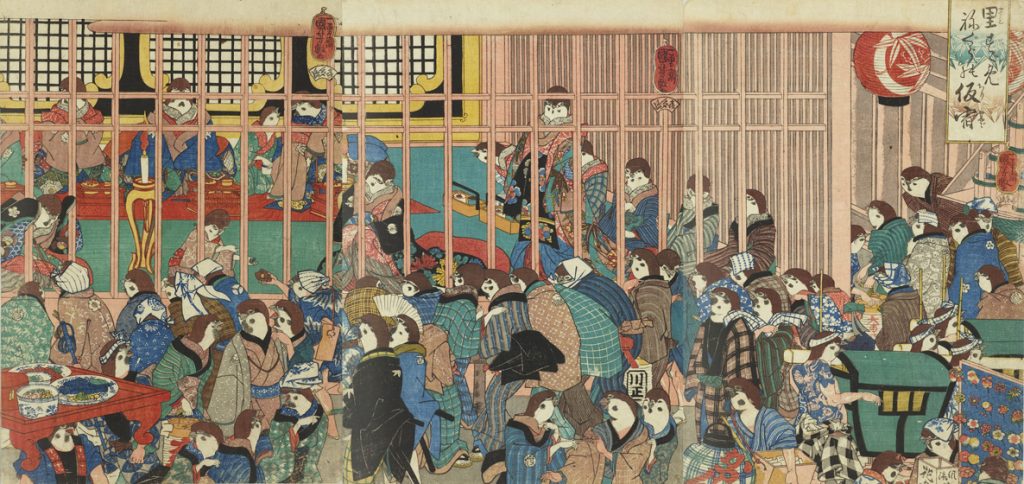

2. Astonishing Large-Scale Motifs
Utagawa Kuniyoshi became one of the most popular ukiyo-e artists with the huge success of his “One Hundred and Eight Heroes from Tales of the Water Margin” series. Although Kuniyoshi became the leading artist of the genre “musha-e (warrior pictures)”, he was never satisfied and always tried to create new compositions and themes. Kuniyoshi’s series of warrior paintings with skeletons, fierce sharks, and other gigantic motifs filling up three large screens are his essential works. The people of Edo must have been astonished by the new artistic frontiers he began to explore in his early 50s.


3.A large exhibition marking the 160th anniversary of his death
Kuniyoshi was not only skilled at caricatures and warrior pictures. He also created a wide range of fascinating works in various genres, including landscapes incorporating Western artistic expressions and “bijin-ga (pictures of beautiful women)” of cool and lively women. This exhibition commemorating the 160th anniversary of Kuniyoshi’s death, presents a total of 160 works of various genres. The exhibition is divided into two sessions: “PART I: “Transform the Transient World into Amusement! – Caricatures and Social Conditions” from September 4 to 26, and “PART II: “Astonish the People of Edo! –Warriors and Landscapes” from October 1 to 24. The works exhibited will be changed entirely between the two sessions.

Highlight
Corns’ Comic: Corn Swinging the Hair(PARTⅠ)/ Private Collection
Here, a corn is dancing with its hair swaying in the air. The corn is painted in imitation of the lion spirit which appears in a dance of the Kabuki play called “Shakkyō-mono”. You may have seen Kabuki actors on TV swinging their long red and white hair wildly. The same kind of dance is performed by a corn in this painting.
A singer and a flute player in the back are also painted as anthropomorphic vegetables, perhaps a pumpkin and a sweet potato. This innovative work of vegetables performing a kabuki play is a perfect example of Kuniyoshi’s sense of humor.
Admission
| Adult | 1000 yen |
| University and High school students | 700 yen |
| Junior High School Students and below | Free |
開館日カレンダー
■休館日
休館日
1-3, 6, 13, 21, 27-30
2021 / 09
1-3, 6, 13, 21, 27-30
| SUN | MON | TUE | WED | THU | FRI | SAT |
|---|
休館日
4, 11, 18, 25-28
2021 / 10
4, 11, 18, 25-28
| SUN | MON | TUE | WED | THU | FRI | SAT |
|---|
Weather in Ukiyo-e
2021, June 26th-August 29th
- [1st Term] June 26th-July 25th
- [2nd Term] July 30th-August 29th
※Works change between two terms
Will be closed on June 28, July 5, 12, 19, 26-29, August 2, 10, 16, 23.
Various weather phenomena are depicted in ukiyo-e: clear skies, heavy rain, gentle snowfall, and rainbows after rain. Ukiyo-e artists expressed the ever-changing weather with delicate color changes or with bold deformation.
Japan’s diverse climate, which changes along with the seasons, has had a great influence on people’s lives in both the past and present. During the Edo period, heavy rains caused frequent floods, and unseasonable weather conditions sometimes led to famine.
Even today, with the advancement of science, we cannot control the weather.
Although we prepare for daily changes in the weather by relying on the weather forecast, in recent years, unpredictable abnormal weather such as heavy rain and extreme heat often hit us, and people’s concern for climate change is increasing.
In this exhibition, we focus on the weather depicted in ukiyo-e, and introduce mainly landscape prints created by such artists as Katsushika Hokusai, Utagawa Hiroshige, and Kobayashi Kiyochika. Through the unique expressions of these ukiyo-e artists, you will be able to experience not only the aesthetic sense of the Japanese people who love the changing sky, but also the activities of the people who were sometimes at the mercy of the wind and rain.
Capturing a Variety of Rain
From light rain to thunderstorms, there are a wide variety of ukiyo-e works on the theme of rain. Some of them remind us of the “guerrilla rainstorms” that we have heard so much about in recent years. For ukiyo-e artists, how they express the variety of rain, which is difficult to draw, is a highlight that shows their techniques, and the dramatic changes in everyday life caused by sudden rain might have been attractive as a subject of ukiyo-e.。
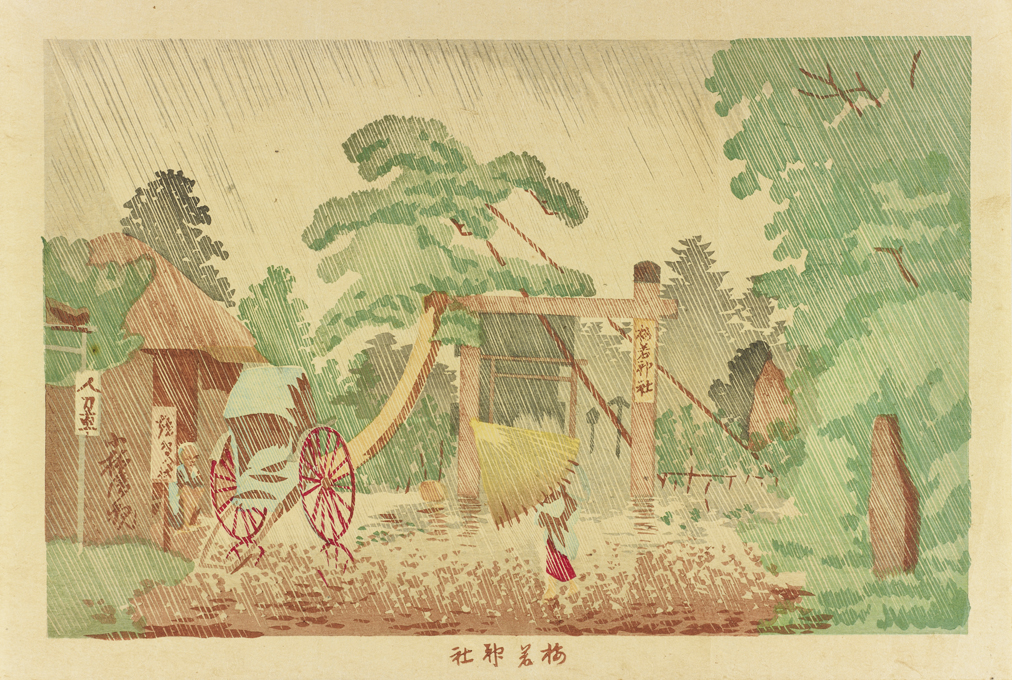
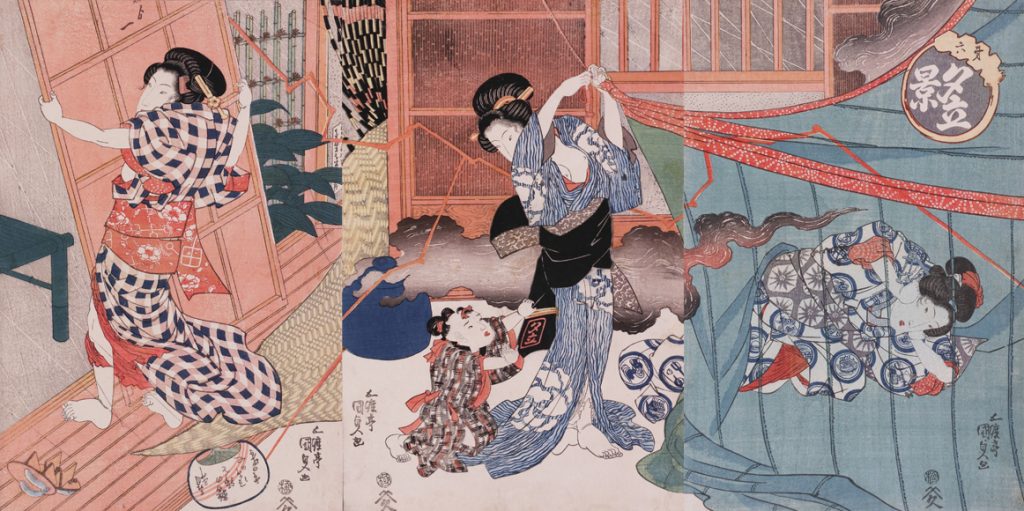
Snowy Landscapes
In the Edo period (1603-1868), the Sumida River, Mt. Atago and Kan’eiji Temple were known for their beautiful landscapes with snow, and many snow scenes in Edo were drawn in ukiyo-e. However, it seems a little strange to us because snow rarely accumulates in modern Tokyo. In fact, most of the Edo period is considered to have been a Little Ice Age, and colder than it is today. This might be one of the reasons why many ukiyo-e of snowy landscapes were created.
Various Shapes of Clouds and Colors of the Sky
Highlighted in this exhibition are expressions of the sky that are unique to ukiyo-e and differ from reality, such as ‘spear-shaped’ haze and blue and red gradation. We introduce works that show unique and original depictions of the sky, such as Katsushika Hokusai’s Thunderstorm Beneath the Summit from Thirty-six Views of Mount Fuji, in which geometric patterns represent lightning, and clear weather and rain are expressed in the same illustration, as well as Utagawa’’s Plum Park in Kameido from One Hundred Famous Views of Edo, whose bold color scheme features a red sky.
Abnormal Weather
In the Meiji era, ukiyo-e artists began to depict current disasters and incidents that had been prohibited to be drawn by the Edo Shogunate in the Edo period. Among them, many works that convey the flood damage to urban areas caused by heavy rain were drawn.
Highlight
Utagawa Hiroshige “One Hundred Famous Views of Edo: Sudden Shower Over Shin-Ōhashi Bridge and Atake”後期
This is one of the most famous ukiyo-e masterpieces depicting rain, which captured an evening shower that hit the Shin-Ohashi Bridge over the Sumida River (today, Chuo Ward sits on the west bank, while Koto Ward is on the east).
Among the people on the bridge, we can see a man wearing a woven-rush mat to avoid getting wet, and three men are huddling under one umbrella, which tells us that it was an unexpected rain.
The streaks of rain that cover the screen are made using two types of lines with different angles and shades carved into two woodblocks, then printed. The combination of the depiction of hazy Atake on the opposite bank and the lines of the rain skillfully emphasize the strength and depth of the rain.
Furthermore, the unsettling movement of the clouds is expressed by “atenashi-bokashi”, an irregularly shaped blur, at the top of the painting. A variety of techniques were used to recreate the scene of a violent evening shower and the panic of the people.
This piece, which is also part of Hiroshige’s late masterpiece, the One Hundred Famous Views of Edo series, is considered a gem which fully demonstrates his sensibility and strength in composition, refined as he continued to draw all kinds of weather.
Admission
| Adult | 800 yen |
| University and High school students | 600 yen |
| Junior High School Students and below | Free |
Calendar
■ close
休館日
7,14,21-25,28
2021 / 06
7,14,21-25,28
| SUN | MON | TUE | WED | THU | FRI | SAT |
|---|
休館日
5,12,19,26-29
2021 / 07
5,12,19,26-29
| SUN | MON | TUE | WED | THU | FRI | SAT |
|---|
休館日
2,10,16,23,30,31
2021 / 08
2,10,16,23,30,31
| SUN | MON | TUE | WED | THU | FRI | SAT |
|---|
Kaburaki Kiyokata and Hirezaki Eiho – Illustrations bringing color to modern literature
The Unknown Rivalry –Kaburaki Kiyokata and Hirezaki Eihō
With the rediscovery of “Tsukiji Akashi-chō” in 2019, Kaburaki Kiyokata (1878-1972) gathered attention. Although he is known as a painter of Japanese art, he was also active in the genre called kuchi-e (illustrations for magazines and novels) from 1903 to 1916. At the time, Hirezaki Eihō (1881-1968) was popular alongside Kiyokata. Kiyotaka and Eihō both succeeded Yoshitoshi Tsukioka, and they were friends who belonged to the same art association. We will introduce the masterpieces of kuchi-e prints of beautiful women by Kiyokata and Eihō from the Meiji Era.
The Unknown Woodblock Prints with Excellent Techniques
From the late 20s of Meiji Era to the early Taishō Era, kuchi-e prints made with woodblocks were used in the opening pages of the magazines and novels. Kuchi-e which brilliantly illustrated stories, did not simply inherit the mastery of ukiyo-e from the Edo period, but largely surpassed its techniques with delicate carving and painting. However, as they are rarely studied by current ukiyo-e researchers, they had been a forgotten genre. We have chosen 110 pieces from the collection by a kuchi-e collector, Asahi Tomoo to highlight the beauty of kuchi-e prints.
Unknown Illustrators –Keishū, Eisen, Toshikata and Hanko
Kuchi-e prints used in the opening pages of magazines and novels were produced by more than 100 artists since the late 20s of the Meiji period. Popular artists before Kiyokata and Eihō, were Takeuchi Keishū (1861-1943), Tomioka Eisen (1864-1905), Mizuno Toshikata (1866-1908) and Kajita Hanko (1870-1917). Among them, Mizuno Toshikata, the master of Kaburaki Kiyokata, is an essential artist to study in order to understand the artworks of Kiyokata. We will introduce these four illustrators along with Kiyokata and Eihō.
Highlight of this exhibition
Hirezaki Eihō “Illustration for “Zoku Fūryūsen” by Izumi Kyōka” 1905
This is the kuchi-e printed on the opening page of a novel by Izumi Kyōka. Depicted is the scene where a man rescues a woman who fell into the lake from a boat capsized by a tornado. The running water fills the scene, and the characters are only vaguely seen. Excellent printing technique and an innovative composition are both incorporated in this piece. Although it is not as widely known as the relationship with Kaburaki Kiyokata, Hirezaki Eihō also had a deep connection with Izumi Kyōka. Not only had he worked on numerous illustrations for novels by Kyōka, but also had a close friendship with her.
※This is the same exhibition as that held in March 2020 which was suspended to prevent the spread of coronavirus infection.
Admission
| Adult | 1000 yen |
| University and High school students | 700 yen |
| Junior High School Students and below | Free |
Calendar
■Closed
休館日
6,10,17-20,24,31
2021 / 05
6,10,17-20,24,31
| SUN | MON | TUE | WED | THU | FRI | SAT |
|---|
休館日
7,14,21-25,28
2021 / 06
7,14,21-25,28
| SUN | MON | TUE | WED | THU | FRI | SAT |
|---|
Losers in Ukiyo-e
Minamoto no Yoshitsune, Akechi Mitsuhide, Saigō Takamori… Losers in History Gather Here
When there are battles or competitions, there will always be winners and losers. And the ones who attract our hearts and leave us impressed in stories such as novels and kabuki plays as well as among historical figures of Japan, could be the losers rather than the winners. These days, there are movements becoming active which try to find new points of view by reviewing history from the losers’ perspectives. Furthermore, it seems that kabuki plays and novels depicting the fleeting nature and sorrow of warriors such as Minamoto no Yoshitsune and Akechi Mitsuhide, who lost battles and fell to ruin, attracted deep sympathy from the people in Edo. This exhibition will focus on the various losers drawn in ukiyo-e who attracted popularity in the Edo period.
Losers Who Attract the Hearts of the Japanese
There is a phrase known as “hougan biiki”.
Minamotono Yoshitsune kept winning the battles between the Taira and Minamoto clans, but was expelled for being a nuisance and subverted by his brother Yoritomo. “Hougan biiki” means “sympathy for a tragic hero” like him, and describes the feeling of taking their side.
For a long time, Japanese people have been telling history and stories with empathy for those who lose and die in such battles. There are so many similar cases, such as of the Taira clan, Yoshitsune, Kusunoki Masashige, Akechi Mitsuhide, and Saigō Takamori. Moreover, as it is obvious from the case of Yoshitsune, we can say that only a fine line exists between winners and losers. Why don’t we think over what it means to win and to lose while viewing various characters drawn in ukiyo-e?
Face-Off! What Happens in a One-on-One Battle?
People sometimes confront each other one-on-one to prove their power and justice. In history, novels, and kabuki plays, such battles and competitions are often the highlight of the story. This section introduces famous scenes of confrontations depicted in ukiyo-e, such as the duel between Benkei and Ushiwakamaru and the contest of strength between Soga Gorō and Asahina.
Villains in Kabuki Plays—People Who Were Destined to Los
Stories in which the hero defeats powerful enemies are called “kanzen chōaku”, and are still popular today. In kabuki and novels of the Edo period, kanzen chōaku was one of the most popular plots. People in Edo cheered when villains with overwhelming power appeared and the hero defeated them. The villains can be said to be destined to lose.
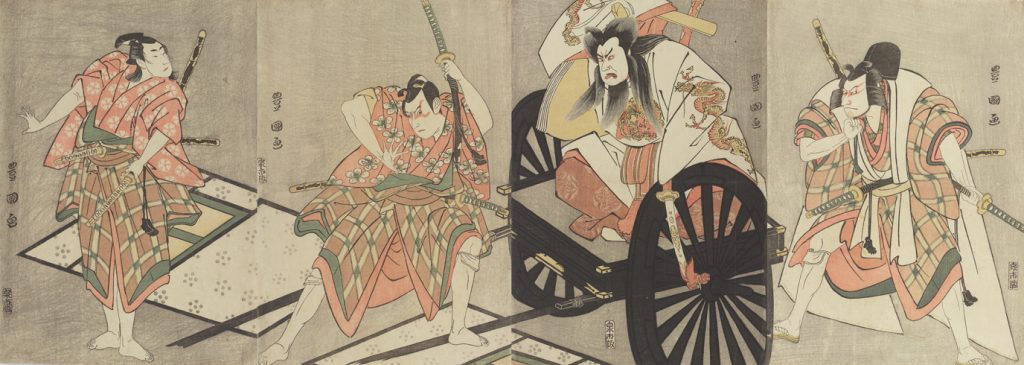
Highlight of this exhibition
Utagawa Toyonobu “Scene from the Story about Toyotomi Hideyoshi “Shinsen Taikō-ki”: Oda Nobunaga Beating Akechi Mitsuhide with the Iron-ribbed Fan”
In Japanese history, Akechi Mitsuhide has a strong image as a rebel or a loser who lost his ruling power in only a few days. However, a recent TV drama which depicted Mitsuhide’s life introduced a new interpretation in which the reason why he betrayed his lord was for justice, because the lord had become out of control and more of a tyrant year by year. In fact, images of Mitsuhide as a tragic hero are not new. For people in the Edo period, Mitsuhide was a villain as a murderer, but at the same time, in kabuki plays and novels, he was depicted as a weak person who was insulted by the tyrant lord and had a grudge. This picture depicts a famous scene from the novel Taikōki, in which his lord Nobunaga hits Mitsuhide with an iron fan because Mitsuhide had admonished Nobunaga’s attack on the Erin-ji Temple with fire. Various episodes, not only about Mitsuhide but also his vassals, who are not known these days, are introduced in this book, and also many ukiyo-e depicting them were published. We can understand his popularity in the Edo period.
Admission
| Adult | 1000 yen |
| University and High school students | 700 yen |
| Junior High School Students and below | Free |
Calendar
■close
休館日
1-14, 19,25-30
2021 / 04
1-14, 19,25-30
| SUN | MON | TUE | WED | THU | FRI | SAT |
|---|
休館日
1-14,17-20,24,31
2021 / 05
1-14,17-20,24,31
| SUN | MON | TUE | WED | THU | FRI | SAT |
|---|

